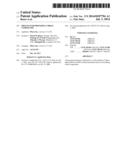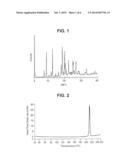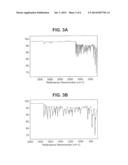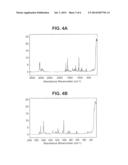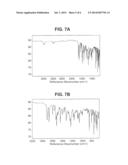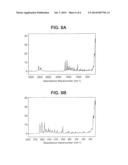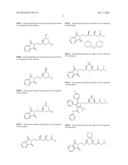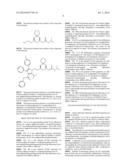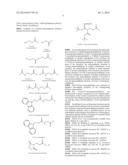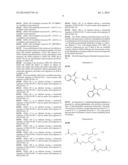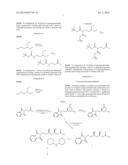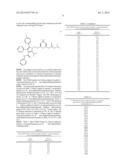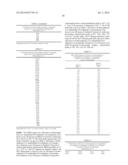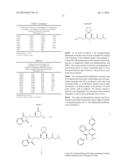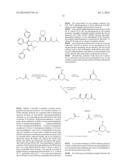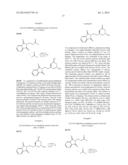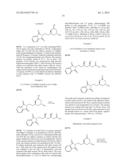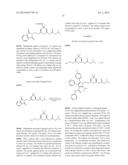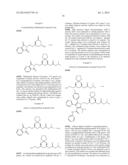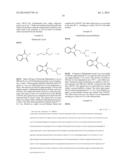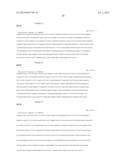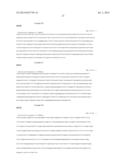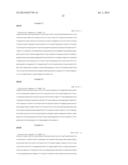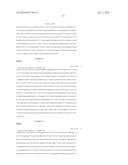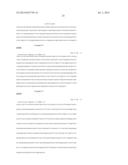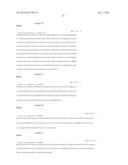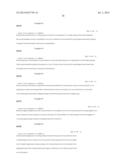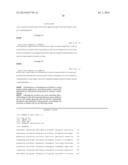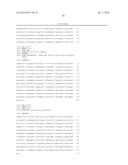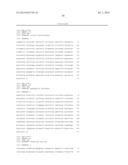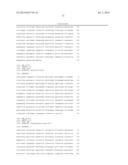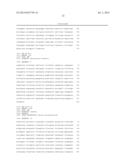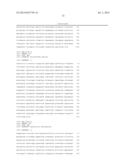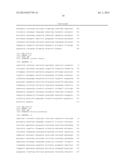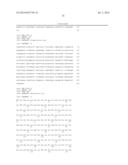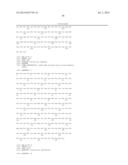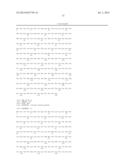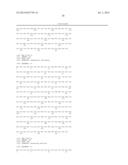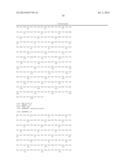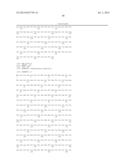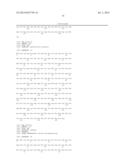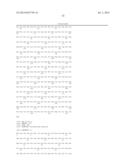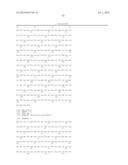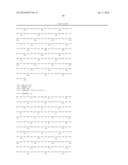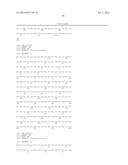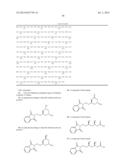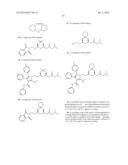Patent application title: Process for Preparing Chiral Compounds
Inventors:
David W. Bauer (Portage, MI, US)
Padraig M. O'Neill (Ringaskiddy, IE)
Timothy J. Watson (Waterford, CT, US)
Shanghui Hu (Cranbury, NJ, US)
Assignees:
PFIZER INC.
IPC8 Class: AC07D40506FI
USPC Class:
548465
Class name: Polycyclo ring system having the five-membered hetero ring as one of the cyclos bicyclo ring system having the five-membered hetero ring as one of the cyclos (e.g., octahydroindoles, etc.) additional hetero ring, attached directly or indirectly to the bicyclo ring system by nonionic bonding
Publication date: 2014-07-03
Patent application number: 20140187794
Abstract:
The present invention is directed to a 2-deoxyribose-5-phosphate aldolase
(DERA) chemoenzymatic process for making chiral compounds.Claims:
1-31. (canceled)
32. 2-[2-(4,6-Dihydroxy-tetrahydro-pyran-2-yl)ethyl]-isoindole-1,3-dione.
33. A compound according to claim 32, wherein said compound is ##STR00038##
34. A compound according to claim 32, wherein said compound is ##STR00039##
35. A compound of the formula ##STR00040##
36. A compound of the formula ##STR00041##
37. A compound of the formula ##STR00042##
38. A compound of the formula ##STR00043##
39. A compound of the formula ##STR00044##
40. A compound of the formula ##STR00045##
41. A compound of the formula ##STR00046##
42. A compound of the formula ##STR00047##
43. A crystalline form of 4-fluoro-alpha-[2-methyl-1-oxopropyl]-gamma-oxo-N, beta-diphenylbenzenebutanamide characterized as having X-ray diffraction peaks of about 9.0, 12.7, 20.2, 22.6, and 25.2 degrees two theta.
44. A crystalline form of (2R-trans)-5-(4-fluorophenyl)-2-(1-methylethyl)-N,4-diphenyl-1-[2-(tetrah- ydro-4-hydroxy-6-oxo-2H-pyran-2-yl)ethyl]-1H-3-carboxamide characterized as having powder X-ray diffraction peaks of about 6.3, 12.7, 16.8, 21.1 and 25.5 degrees two theta.
Description:
BACKGROUND OF THE INVENTION
[0001] The present invention is directed to a 2-deoxyribose-5-phosphate aldolase (DERA) chemoenzymatic process for making chiral compounds.
[0002] The use of DERA (deoxyribose aldolase) family of aldolases in chemoenzymatic processes has been described. See U.S. Pat. No. 5,795,749, WO 03/006656, WO 2004/027075, WO 2005/012246; Gijsen, H. J. M., et al. JACS, 1994, 116, 8422-8423; Gijsen, H. J. M., et al., JACS, 1995, 117, 7585-7591; Greenberg, W. A., et al., PNAS, 2004, 101, 5788-5793, U.S. Pat. No. 6,964,863 and Biotechonol J, 101, pgs 537-548 (2006). However, some of the processes provided poor overall yield as well as a mixture of products. In addition, the processes were limited to specific substrates. Accordingly, there exists a need in the art for a chemoenzymatic process that is effective and efficient for alternative substrates.
SUMMARY OF THE INVENTION
[0003] The present invention relates to a process comprising the step of reacting acetaldehyde with an N-protected aminoaldehyde substrate selected from the group consisting of 3-phthalimidopropionaldehyde, N-formyl-3-aminopropionaldehyde, 3-succinimido-propionaldehyde or N-diBoc-3-aminopropionaldehyde under aldolase-catalyzed aldol condensation conditions to form the corresponding lactol.
[0004] The present invention also relates to a process wherein said aldolase is a 2-deoxyribose-5-phosphate aldolase (DERA) aldolase.
[0005] The present invention also relates to a process wherein said aldolase is DERA 04 comprising a nucleotide sequence of SEQ ID NO: 2 or an amino acid sequence of SEQ ID NO: 17;
[0006] DERA 06 comprising a nucleotide sequence of SEQ ID NO: 3 or an amino acid sequence of SEQ ID NO: 18;
[0007] DERA 101 comprising a nucleotide sequence of SEQ ID NO: 8 or an amino acid sequence of SEQ ID NO: 23;
[0008] DERA 102 comprising a nucleotide sequence of SEQ ID NO: 9 or an amino acid sequence of SEQ ID NO: 24;
[0009] DERA 103 comprising a nucleotide sequence of SEQ ID NO: 10 or an amino acid sequence of SEQ ID NO: 25;
[0010] DERA 104 comprising a nucleotide sequence of SEQ ID NO: 11 or an amino acid sequence of SEQ ID NO: 26;
[0011] DERA 105 comprising a nucleotide sequence of SEQ ID NO: 12 or an amino acid sequence of SEQ ID NO: 27;
[0012] DERA 106 comprising a nucleotide sequence of SEQ ID NO: 13 or an amino acid sequence of SEQ ID NO: 28;
[0013] DERA 107 comprising a nucleotide sequence of SEQ ID NO: 14 or an amino acid sequence of SEQ ID NO: 29;
[0014] DERA 108 comprising a nucleotide sequence of SEQ ID NO: 15 or an amino acid sequence of SEQ ID NO: 30;
[0015] or an aldolase having an amino acid sequence identity of at least about 20% thereof.
[0016] More specifically, the present invention also relates to a process wherein said aldolase is DERA 04 comprising a nucleotide sequence of SEQ ID NO: 2 or an amino acid sequence of SEQ ID NO: 17; DERA 06 comprising a nucleotide sequence of SEQ ID NO: 3 or an amino acid sequence of SEQ ID NO: 18 or DERA 102 comprising a nucleotide sequence of SEQ ID NO: 9 or an amino acid sequence of SEQ ID NO: 24.
[0017] More specifically, the present invention also relates to a process wherein said aldolase is DERA 04 comprising a nucleotide sequence of SEQ ID NO: 2 or an amino acid sequence of SEQ ID NO: 17.
[0018] More specifically, the present invention also relates to a process wherein said aldolase is DERA 102 comprising a nucleotide sequence of SEQ ID NO: 9 or an amino acid sequence of SEQ ID NO: 24.
[0019] The present invention also relates to a process wherein said N-protected aminoaldehyde substrate is 3-phthalimidopropionaldehyde.
[0020] The present invention also relates to a process wherein said N-protected aminoaldehyde substrate is N-formyl-3-aminopropionaldehyde or 3-succinimido-propionaldehyde.
[0021] The present invention also relates to a process wherein said N-protected aminoaldehyde substrate is N-diBoc-3-aminopropionaldehyde.
[0022] The present invention relates to a process comprising the step of:
[0023] (a) reacting an aldehyde with an N-protected aminoaldehyde substrate selected from the group consisting of 3-phthalimidopropionaldehyde, N-formyl-3-aminopropionaldehyde, 3-succinimido-propionaldehyde or N-diBoc-3-aminopropionaldehyde under aldolase-catalyzed aldol condensation conditions to form the corresponding lactol;
[0024] (b) oxidizing the lactol so formed to yield the corresponding lactone;
[0025] (c) reacting the lactone so formed with isopropyl alcohol and acetone under acidic catalysis to yield the corresponding isopropyl acetonide ester;
[0026] (d) treating the isopropyl acetonide ester so formed with a base to yield the corresponding amino acetonide isopropyl ester.
[0027] The present invention relates to a process comprising the step of:
[0028] (a) reacting an aldehyde with an N-protected aminoaldehyde substrate selected from the group consisting of 3-phthalimidopropionaldehyde, N-formyl-3-aminopropionaldehyde, 3-succinimido-propionaldehyde or N-diBoc-3-aminopropionaldehyde under aldolase-catalyzed aldol condensation conditions to form the corresponding lactol;
[0029] (b) oxidizing the lactol so formed to yield the corresponding lactone;
[0030] (c) reacting the lactone so formed with cyclopentanone to yield the corresponding cyclopentylidene phthalimido isopropyl ester; and
[0031] (d) treating the cyclopentylidene phthalimido isopropyl ester so formed with base to yield the corresponding amino cyclopentylidene isopropyl ester.
[0032] The present invention relates to a process comprising the steps of:
[0033] (a) reacting an aldehyde with an N-protected aminoaldehyde substrate selected from the group consisting of 3-phthalimidopropionaldehyde, N-formyl-3-aminopropionaldehyde, 3-succinimido-propionaldehyde or N-diBoc-3-aminopropionaldehyde under aldolase-catalyzed aldol condensation conditions to form the corresponding lactol;
[0034] (b) dehydrogenating the lactol so formed under catalytic dehydrogenation conditions to yield the corresponding heptanoic acid;
[0035] (c) treating said 3,5-dihydroxyheptanoic acid so formed with dicyclohexylamine to form the corresponding salt;
[0036] (d) reacting the salt so formed with triisopropyl orthoformate and acetone under acidic catalysis to yield the corresponding isopropyl acetonide ester; and
[0037] (e) treating the isopropyl acetonide ester so formed with base to yield the corresponding amino dicyclohexylamine isopropyl ester.
[0038] The present invention relates to a process comprising the steps of:
[0039] (a) reacting an aldehyde with an N-protected aminoaldehyde substrate selected from the group consisting of 3-phthalimidopropionaldehyde, N-formyl-3-aminopropionaldehyde, 3-succinimido-propionaldehyde or N-diBoc-3-aminopropionaldehyde under aldolase-catalyzed aldol condensation conditions to form the corresponding lactol;
[0040] (b) oxidizing the lactol so formed to yield the corresponding 3,5-dihydroxyheptanoic acid;
[0041] (c) treating said 3,5-dihydroxyheptanoic acid with dicyclohexylamine to form the corresponding salt; and
[0042] (d) reacting the salt so formed with triisopropyl orthoformate to yield the corresponding isopropyl acetonide ester; and
[0043] (e) treating the isopropyl acetonide ester so formed with base to yield the corresponding amino acetonide isopropyl ester.
[0044] The present invention relates to a process comprising the step of reacting an aldehyde with an aminoaldehyde substrate or an N-protected aminoaldehyde substrate under DERA 101, DERA 102, DERA 103, DERA 104, DERA 105, DERA 106, DERA 107 or DERA 108 aldolase-catalyzed aldol condensation conditions to form the corresponding lactol.
[0045] The present invention also relates to a process wherein said aminoaldehyde or said N-protected aminoaldehyde is N-Boc-3-aminopropionaldehyde, 3-aminopropionaldehyde, aminoacetaldehyde, N-CBz-3-aminopropionaldehyde, N-acetyl-3-aminopropionaldehyde, N-Fmoc-3-aminopropionaldehyde, or N-Fmoc-aminoacetaldehyde.
[0046] More specifically, the present invention also relates to a process wherein said N-protected aminoaldehyde is N-Boc-3-aminopropionaldehyde
[0047] More specifically, the present invention also relates to a process wherein said aminoaldehyde or said N-protected aminoaldehyde is N-CBz-3-aminopropionaldehyde or N-Fmoc-3-aminopropionaldehyde.
[0048] More specifically, the present invention also relates to a process wherein said aminoaldehyde or said N-protected aminoaldehyde is N-CBz-3-aminopropionaldehyde.
[0049] The present invention also relates to a process wherein said aldolase is DERA 102.
[0050] The present invention relates to a process comprising the step of reacting an aldehyde with an aminoaldehyde substrate or an N-protected aminoaldehyde substrate under DERA 101, DERA 102, DERA 103, DERA 104, DERA 105, DERA 106, DERA 107 or DERA 108 aldolase-catalyzed aldol condensation conditions to form the corresponding lactol, and oxidizing the lactol so formed to yield the corresponding lactone.
[0051] The present invention relates to a process comprising the steps of:
[0052] (a) reacting an aldehyde with an aminoaldehyde substrate or an N-protected aminoaldehyde substrate under DERA 101, DERA 102, DERA 103, DERA 104, DERA 105, DERA 106, DERA 107 or DERA 108 aldolase-catalyzed aldol condensation conditions to form the corresponding lactol;
[0053] (b) dehydrogenating the lactol so formed under catalytic dehydrogenation conditions to yield the corresponding 3,5-dihydroxyheptanoic acid;
[0054] (c) treating said 3,5-dihydroxyheptanoic acid so formed with dicyclohexylamine to form the corresponding salt; and
[0055] (d) reacting the salt so formed with triisopropyl orthoformate to yield the corresponding isopropyl acetonide ester.
[0056] The present invention relates to a process comprising the steps of:
[0057] (a) reacting an aldehyde with an aminoaldehyde substrate or an N-protected aminoaldehyde substrate under DERA 101, DERA 102, DERA 103, DERA 104, DERA 105, DERA 106, DERA 107 or DERA 108 aldolase-catalyzed aldol condensation conditions to form the corresponding lactol;
[0058] (b) oxidizing the lactol so formed to yield the corresponding 3,5-dihydroxyheptanoic acid;
[0059] (c) treating said 3,5-dihydroxyheptanoic acid with dicyclohexylamine to form the corresponding salt; and
[0060] (d) reacting the salt so formed with triisopropyl orthoformate to yield the corresponding isopropyl acetonide ester.
[0061] The present invention relates to a process comprising the step of reacting an aldehyde with an aminoaldehyde substrate compound of the general formula (I):
##STR00001##
wherein:
[0062] n=1, 2, 3 or 4;
[0063] R' is hydrogen or an N-protecting group;
[0064] R'' is hydrogen or an N-protecting group; or R' and R'' taken together with nitrogen to which they are attached form a 5- or 6-membered heterocyclic moiety,
[0065] under DERA 101, DERA 102, DERA 103, DERA 104, DERA 105, DERA 106, DERA 107 or DERA 108 aldolase-catalyzed aldol condensation conditions to form the corresponding lactol.
[0066] The present invention also relates to the compound 2-[2-(4,6-Dihydroxy-tetrahydro-pyran-2-yl]-isoindole-1,3-dione.
[0067] More specifically, the present invention also relates to a compound of the formula
##STR00002##
[0068] More specifically, the present invention also relates to a compound of the formula
##STR00003##
[0069] The present invention also relates to the compound of the formula
##STR00004##
[0070] The present invention also relates to the compound of the formula
##STR00005##
[0071] The present invention also relates to the compound of the formula
##STR00006##
[0072] The present invention also relates to the compound of the formula
##STR00007##
[0073] The present invention also relates to the compound of the formula
##STR00008##
[0074] The present invention also relates to the compound of the formula
##STR00009##
[0075] The present invention also relates to the compound of the formula
##STR00010##
[0076] The present invention also relates to the compound of the formula
##STR00011##
[0077] The present invention relates to a crystalline form of 4-fluoro-alpha-[2-methyl-1-oxopropyl]-gamma-oxo-N, beta-diphenylbenzenebutanamide characterized as having powder X-ray diffraction peaks of about 9.0, 12.7, 20.2, 22.6, and 25.2 degrees two-theta.
[0078] The present invention relates to a crystalline form of (2R-trans)-5-(4-fluorophenyl)-2-(1-methylethyl)-N,4-diphenyl-1-[2-(tetrah- ydro-4-hydroxy-6-oxo-2H-pyran-2-yl)ethyl]-1H-pyrrole-3-carboxamide characterized as having powder X-ray diffraction peaks of about 6.3, 12.7, 16.8, 21.1 and 25.5 degrees two-theta.
BRIEF DESCRIPTION OF THE DRAWINGS
[0079] FIG. 1 is an experimental powder X-ray diffraction pattern for 4-fluoro-alpha-[2-methyl-1-oxopropyl]-gamma-oxo-N, beta-diphenylbenzenebutanamide. The scale of the abscissa is degrees two-theta. The ordinate is the intensity of the counts.
[0080] FIG. 2 is the differential scanning calorimetry (DSC) thermogram for 4-fluoro-alpha-[2-methyl-1-oxopropyl]-gamma-oxo-N, beta-diphenylbenzenebutanamide.
[0081] FIG. 3A is the infrared (FTIR) spectrum for 4-fluoro-alpha-[2-methyl-1-oxopropyl]-gamma-oxo-N, beta-diphenylbenzenebutanamide showing reflectance wavenumbers from 3500 to 1000 cm-1.
[0082] FIG. 3B is the infrared (FTIR) spectrum for 4-fluoro-alpha-[2-methyl-1-oxopropyl]-gamma-oxo-N, beta-diphenylbenzenebutanamide showing reflectance wavenumbers from 2000 to 800 cm-1.
[0083] FIG. 4A is the Raman spectrum for 4-fluoro-alpha-[2-methyl-1-oxopropyl]-gamma-oxo-N, beta-diphenylbenzenebutanamide showing absorbance wavenumbers from 3500 to 500 cm-1.
[0084] FIG. 4B is the Raman spectrum for 4-fluoro-alpha-[2-methyl-1-oxopropyl]-gamma-oxo-N, beta-diphenylbenzenebutanamide showing absorbance wavenumbers from 2000 to 200 cm-1.
[0085] FIG. 5 is an experimental powder X-ray diffraction pattern for (2R-trans)-5-(4-fluorophenyl)-2-(1-methylethyl)-N,4-diphenyl-1-[2-(tetrah- ydro-4-hydroxy-6-oxo-2H-pyran-2-yl)ethyl]-1H-pyrrole-3-carboxamide. The scale of the abscissa is degrees two-theta. The ordinate is the intensity of the counts.
[0086] FIG. 6 is the differential scanning calorimetry (DSC) thermogram for (2R-trans)-5-(4-fluorophenyl)-2-(1-methylethyl)-N,4-diphenyl-1-[2-(te- trahydro-4-hydroxy-6-oxo-2H-pyran-2-yl)ethyl]-1H-pyrrole-3-carboxamide.
[0087] FIG. 7A is the infrared (FTIR) spectrum for (2R-trans)-5-(4-fluorophenyl)-2-(1-methylethyl)-N,4-diphenyl-1-[2-(tetrah- ydro-4-hydroxy-6-oxo-2H-pyran-2-yl)ethyl]-1H-pyrrole-3-carboxamide showing reflectance wavenumbers from 3500 to 1000 cm-1.
[0088] FIG. 7B is the infrared (FTIR) spectrum for (2R-trans)-5-(4-fluorophenyl)-2-(1-methylethyl)-N,4-diphenyl-1-[2-(tetrah- ydro-4-hydroxy-6-oxo-2H-pyran-2-yl)ethyl]-1H-pyrrole-3-carboxamide showing reflectance wavenumbers from 2000 to 800 cm-1.
[0089] FIG. 8A is the Raman spectrum for (2R-trans)-5-(4-fluorophenyl)-2-(1-methylethyl)-N,4-diphenyl-1-[2-(tetrah- ydro-4-hydroxy-6-oxo-2H-pyran-2-yl)ethyl]-1H-pyrrole-3-carboxamide showing absorbance wavenumbers from 3500 to 500 cm-1.
[0090] FIG. 8B is the Raman spectrum for (2R-trans)-5-(4-fluorophenyl)-2-(1-methylethyl)-N,4-diphenyl-1-[2-(tetrah- ydro-4-hydroxy-6-oxo-2H-pyran-2-yl)ethyl]-1H-pyrrole-3-carboxamide showing absorbance wavenumbers from 2000 to 200 cm-1.
DETAILED DESCRIPTION OF THE INVENTION
Definitions
[0091] Unless indicated otherwise, the following terms are defined as follows:
[0092] The article "a" or "an" as used herein refers to both the singular and plural form of the object to which it refers.
[0093] The term "aldolase-catalyzed aldol condensation conditions" as used herein refers to any aldol condensation conditions known in the art that can be catalyzed by an aldolase, as described herein.
[0094] The aldehyde for use in the present invention may be any aldehyde that will undergo an aldol condensation with a substrate, as described herein, in the presence of an aldolase, as described herein. An example of suitable aldehyde is, but is not limited to, acetaldehyde.
[0095] A substrate for use in the present invention may be any aminoaldehyde or N-protected aminoaldehyde. Such an aminoaldehyde or N-protected aminoaldehyde will react with an aldehyde under aldolase-catalyzed aldol condensation conditions, each as described herein.
[0096] Suitable N-protecting groups for the aminoaldehyde include, but are not limited to, phthalimido, N-formyl, succinimdo, di-butoxycarbonyl (di-Boc), benzyloxycarbonyl (CBz), butoxycarbonyl (Boc), 9-fluorenylmethoxycarbonyl (Fmoc), benzyl, and dibenzyl.
[0097] Examples of a suitable aminoaldehyde substrate include, but are not limited to:
##STR00012##
[0098] In one embodiment of the invention, the aminoaldehyde substrate is 3-phthalimidopropionaldehyde, N-formyl-3-aminopropionaldehyde, N-Boc-3-aminopropionaldehyde, 3-succinimido-propionaldehyde or N-diBoc-3-aminopropionaldehyde. In another embodiment of the invention, the aminoaldehyde substrate is N-CBz-3-aminopropionaldehyde or N-Fmoc-3-aminopropionaldehyde. In another embodiment of the invention, the aminoaldehyde substrate is 3-amino-propionaldehyde. In another embodiment of the invention, the aminoaldehyde substrate is amino-acetaldehyde. In another embodiment of the invention, the aminoaldehyde substrate is N-CBz-3-aminopropionaldehyde (commercially available from Aldrich). In another embodiment of the invention, the aminoaldehyde substrate is N-acetyl-3-aminopropionaldehyde. In another embodiment of the invention, the aminoaldehyde substrate is N-Fmoc-3-aminopropionaldehyde.
[0099] Both N-Fmoc-aminoaldehydes were obtained via standard Dess-Martin oxidation of the corresponding N-Fmoc aminoalcohol.
[0100] The N-acetyl-3-aminopropionaldehyde was obtained from 3-amino-1-propanol by a two step procedure: N-acetylation of the 3-amino-1-propanol by methyl actetate followed by Dess-Martin oxidation to give the desired product with the correct ESI-MS [M+H].sup.+ 116.25 and [M+Na].sup.+ 138.20.
[0101] An aldolase for use in the present invention may be any enzyme that has aldolase activity towards an aminoaldehyde substrate, N-protected aminoaldehyde substrate, or pyrrole aldehyde substrate, each as described herein. In one embodiment of the invention, the aldolase is a 2-deoxyribose-5-phosphate aldolase (DERA). Examples of a suitable DERA aldolase include, but are not limited to:
[0102] DERA 03 (E. coli) (commercially available from Sigma Aldrich, St. Louis, Mo.);
[0103] DERA 04 (William A. Greenberg, et al., PNAS, (2004), Vol. 101, No. 16, pp. 5788-5793 or a modified version thereof);
[0104] DERA 06 (GenBank Accession NP--294929 or a modified version thereof);
[0105] DERA 08 (GenBank Accession NP--465519 or a modified version thereof);
[0106] DERA 11 (GenBank Accession NP--439273);
[0107] DERA 12 (GenBank Accession NP--229359);
[0108] DERA 15 (Haruhiko Sakuraba, et al., Journal of Biological Chemistry (2003), Vol. 278, No. 12, pp 10799-10806);
[0109] DERA 101 (GenBank Accession NP--906068.1 or a modified version thereof);
[0110] DERA 102 (GenBank Accession NP--813976.1 or a modified version thereof);
[0111] DERA 103 (GenBank Accession NP--01130044.1 or a modified version thereof);
[0112] DERA 104 (GenBank Accession YP--924715.1 or a modified version thereof);
[0113] DERA 105 (GenBank Accession YP--148352.1 or a modified version thereof);
[0114] DERA 106 (GenBank Accession NP--471437.1 or a modified version thereof);
[0115] DERA 107 (GenBank Accession NP--242218.1 or a modified version thereof); and
[0116] DERA 108 (GenBank Accession ZP--00875069.1 or a modified version thereof).
[0117] In one embodiment of the invention, the aldolase is an aldolase having an amino acid sequence identity of at least about 20% thereof; preferably, at least 70% thereof, to a DERA aldolase described herein. In one embodiment of the invention, the DERA aldolase is DERA 04, DERA 06 or DERA 102. In one embodiment of the invention, the DERA aldolase is DERA 102.
[0118] According to the invention, DERA 03, DERA 04, DERA 06, DERA 08, DERA 11, DERA 12, DERA 15, DERA 101, DERA 102, DERA 103, DERA 104, DERA 105, DERA 106, DERA 107 and DERA 108 are identified by their nucleotide sequences and amino acid sequences set forth in Examples 1-30.
[0119] More specifically, DERA 03 is an aldolase having a nucleotide sequence of SEQ ID NO: 1 and an amino acid sequence of SEQ ID NO: 16.
[0120] DERA 04 is an aldolase having a nucleotide sequence of SEQ ID NO: 2 and an amino acid sequence of SEQ ID NO: 17.
[0121] DERA 06 is an aldolase having a nucleotide sequence of SEQ ID NO: 3 and an amino acid sequence of SEQ ID NO: 18.
[0122] DERA 08 is an aldolase having a nucleotide sequence of SEQ ID NO: 4 and an amino acid sequence of SEQ ID NO: 19.
[0123] DERA 11 is an aldolase having a nucleotide sequence of SEQ ID NO: 5 and an amino acid sequence of SEQ ID NO: 20.
[0124] DERA 12 is an aldolase having a nucleotide sequence of SEQ ID NO: 6 and an amino acid sequence of SEQ ID NO: 21.
[0125] DERA 15 is an aldolase having a nucleotide sequence of SEQ ID NO: 7 and an amino acid sequence of SEQ ID NO: 22.
[0126] DERA 101 is an aldolase having a nucleotide sequence of SEQ ID NO: 8 and an amino acid sequence of SEQ ID NO: 23.
[0127] DERA 102 is an aldolase having a nucleotide sequence of SEQ ID NO: 9 and an amino acid sequence of SEQ ID NO: 24.
[0128] DERA 103 is an aldolase having a nucleotide sequence of SEQ ID NO: 10 and an amino acid sequence of SEQ ID NO: 25.
[0129] DERA 104 is an aldolase having a nucleotide sequence of SEQ ID NO: 11 and an amino acid sequence of SEQ ID NO: 26.
[0130] DERA 105 is an aldolase having a nucleotide sequence of SEQ ID NO: 12 and an amino acid sequence of SEQ ID NO: 27.
[0131] DERA 106 is an aldolase having a nucleotide sequence of SEQ ID NO: 13 and an amino acid sequence of SEQ ID NO: 28.
[0132] DERA 107 is an aldolase having a nucleotide sequence of SEQ ID NO: 14 and an amino acid sequence of SEQ ID NO: 29.
[0133] DERA 108 is an aldolase having a nucleotide sequence of SEQ ID NO: 15 and an amino acid sequence of SEQ ID NO: 30.
[0134] The DERA aldolases described herein can be prepared by any means known in the art, including but not limited to standard protocols for protein expression in recombinant E. coli (Sambrook and Russell, Molecular Cloning: A Laboratory Manual, 3rd Ed., Cold Spring Harbor, N.Y. 2001). As would be understood by one of skill in the art, modified versions of known DERA aldolases may be necessary or may result depending on cloning conditions and are encompassed by the present invention.
[0135] The following Schemes illustrate the present invention.
Preparation A
##STR00013##
[0137] In Preparation A, 3-phthalimidopropionaldehyde is prepared by reacting phthalimide with acrolein in the presence of benzyltrimethyl ammonium hydroxide (Triton-B). The reaction is stirred at a temperature between about 53° C. to about 67.5° C., preferably about 60° C., for a time period between about 30 minutes to about 3 hours, preferably about 90 minutes.
Preparation B
##STR00014##
[0139] In Preparation B, N-formyl-3-aminopropionaldehyde is prepared by reacting ethyl formate with 1-amino-3,3-dimethoxypropane and treating the amide so formed with acid.
Preparation C
##STR00015##
[0141] In Preparation C, N-Boc-3-aminopropionaldehyde is prepared by reacting 1-amino-3,3-dimethoxypropane with BOC anhydride and treating the amide so formed with acid.
Preparation D
##STR00016##
[0143] In Preparation D, N-di-Boc-3-aminopropionaldehyde is prepared by reacting 1-amino-3,3-dimethoxypropane with BOC anhydrdride in the presence of 4-di(methylamino)pyridine and treating the amide so formed with acid.
Preparation E
3-succinimidopropionaldehyde
[0144] Acrolein is added to a solution of succinimide in the presence of catalytic sodium ethoxide and a polar protic solvent, such as ethanol. The reaction mixture is stirred at a temperature between about 10° C. to about 40° C., preferably about 20-30° C., for a time period between about 20 hours to about 60 hours, preferably about 48 hours.
##STR00017##
[0145] Scheme 1 describes in general a process encompassed by the present invention. As set forth in Scheme 1, a DERA aldolase catalyzes two sequential aldol condensation reactions between 3-phthalimidopropionaldehyde and 2 mol of acetaldehyde in the presence of other suitable solvents such as methyl tert-butyl ether (MTBE) and water to yield the protected desired amino-lactol (A). Suitable DERA aldolases include, but are not limited to, DERA 04, DERA 06, DERA 101, DERA 102, DERA 104, DERA 105, DERA 106, DERA107 and DERA 108, preferably DERA 04 and DERA 102. The acetaldehyde is added to the mixture of 3-phthalimidopropionaldehyde and DERA aldolase over a time period between about 7 hours to about 12 hours, preferably about 10 hours. The mixture so formed is further stirred at a temperature between about 15° C. to about 30° C., preferably about 22° C., for a time period between about 20 hours to about 60 hours, preferably about 48 hours.
[0146] The amino-lactol (A) can undergo catalytic (e.g. platinum on carbon or palladiumon carbon) dehydrogenation to form carboxylic acid (C), which can then undergo lactonization to form (B).
[0147] Any catalytic dehydrogenation means known in the art to convert (A) to (C) are encompassed by the present invention. Examples of suitable catalysts include, but are not limited to, Pt/C, Pd/C, Pt/Bi/C, Pd/Bi/C and any other dehydrogenation catalysts. In one embodiment of the invention, the catalytic dehydrogenation is performed at about pH 7 to about pH 10 using air or oxygen as terminal oxidant.
[0148] Any lactonization means known in the art to convert carboxylic acid (C) to lactone (B) are encompassed by the present invention including, but not limited to, the use of acid catalysts such as, but not limited to, hydrochloric acid, sulfuric acid, methanesulfonic acid (MSA), p-toluenesulfonic acid (TSA) and any other lactonization acids known in the art. More specifically, the 7-(1,3-Dioxo-1,3-dihydro-isoindo-2-yl)-3,5-dihydroxy-heptanoic acid (C) is converted to the corresponding 2-[2-(4-Hydroxy-6-oxo-tetrahydro-pyran-2-yl]-isoindole-1,3-dione (B) by treating (C) with anhydrous hydrochloric acid in the presence of ethyl acetate. The reaction is stirred at room temperature for a time period between about 1 hour to about 4 hours, preferably about 2-3 hours.
[0149] Alternatively, oxidation of the lactol (A) to lactone (B) or carboxylic acid (C) can be performed by use of any oxidation means known in the art that will achieve the desired transformation. More specifically, 2-[2-(4,6-dihydroxy-tetrahydro-pyran-2-yl]-isoindole-1,3-dione (A) is converted to the corresponding 2-[2-(4-hydroxy-6-oxo-tetrahydro-pyran-2-yl]-isoindole-1,3-dione (B) by oxidizing (A) in the presence of an oxidizing agent, such as sodium chlorite. The reaction is stirred at a temperature between about 10° C. to about 30° C., preferably about 23° C., for a time period between about 2 hours to about 6 hours, preferably about 4 hours. The 2-[2-(4,6-dihydroxy-tetrahydro-pyran-2-yl]-isoindole-1,3-dione (A) can also be converted to the corresponding 7-(1,3-dioxo-1,3-dihydro-isoindo-2-yl)-3,5-dihydroxy-heptanoic acid (C) by oxidizing (A) in the presence of an oxidizing agent, such as sodium chlorite, a phosphate buffer, a polar aprotic solvent, such as dimethyl sulfoxide, and an alcohol, such as isopropanol. The reaction is maintained at room temperature and a pH between about 5 to about 6 for a time period between about 2 hours to about 6 hours, preferably about 4 hours.
[0150] The 7-(1,3-dioxo-1,3-dihydro-isoindo-2-yl)-3,5-dihydroxy-heptanoic acid (C) is converted to the corresponding dicyclohexyl amine (DCA) salt (D) by treating (C) with dicyclohexyl amine in the presence of ethyl acetate. The DCA salt (D) is then converted to the phthalimido acetonide isopropyl ester (E) by reacting (D) with DCM, triisopropyl orthoformate in the presence of acetone and methanesulfonic acid.
[0151] The phthalimido acetonide isopropyl ester (E) may also be prepared by reacting 2-[2-(4-hydroxy-6-oxo-tetrahydro-pyran-2-yl]-isoindole-1,3-dione (B) with isopropyl alcohol in the presence of acetone and methanesulfonic acid (MSA). The reaction mixture is stirred at room temperature at a pH between about 1 to about 2, preferably about 1.5, for a time period between about 20 hours to about 28 hours, preferably about 24 hours.
[0152] The phthalimido acetonide isopropyl ester (E) is deprotected to give the corresponding amino acetonide isopropyl ester (F) by treating (E) with a base, such as primary amine, i.e. an alkylamine, diamine such as ethylene diamine or an hydroxylamine, in the presence of a polar protic solvent, such as methanol. The reaction mixture is stirred at room temperature for a time period between about 30 minutes to about 4 hours, preferably about 2 hours.
[0153] The amino acetonide isopropyl ester (F) can be further reacted with 4-fluoro-alpha-[2-methyl-1-oxopropyl]-gamma-oxo-N, beta-diphenylbenzenebutanamide of formula II
##STR00018##
to give the corresponding pyrrole ring containing acetonide isopropyl ester of formula III below
##STR00019##
[0154] According to the invention, as would be understood by one of skill in the art, the stereoselectivity of the enzymatic step can be confirmed via chemical preparation of racemic standards and the development of the related chiral chromatographic methods.
[0155] The PXRD pattern for 4-fluoro-alpha-[2-methyl-1-oxopropyl]-gamma-oxo-N, beta-diphenylbenzenebutanamide is shown in FIG. 1.
[0156] The main peaks (greater than 13% relative intensity) are given in Table 1. 4-fluoro-alpha-[2-methyl-1-oxopropyl]-gamma-oxo-N, beta-diphenylbenzenebutanamide displays characteristic diffraction peaks at 9.0, 12.7, 20.2, 22.6 and 25.2 degrees two theta±0.1 degree. The DSC thermogram is shown in FIG. 2. 4-fluoro-alpha-[2-methyl-1-oxopropyl]-gamma-oxo-N, beta-diphenylbenzenebutanamide shows a sharp endothermic peak at 213° C.±2° C. The FT-IR spectrum is illustrated in FIG. 3. The FT-IR peak table is given in Table 2. 4-fluoro-alpha-[2-methyl-1-oxopropyl]-gamma-oxo-N, beta-diphenylbenzenebutanamide displays characteristic peaks at 696, 1492, 1327, 843, 1151 cm-1 (in this order). The FT-Raman spectrum is illustrated in FIG. 4. The FT-Raman peak table is given in Table 3. 4-fluoro-alpha-[2-methyl-1-oxopropyl]-gamma-oxo-N, beta-diphenylbenzenebutanamide displays characteristic peaks at 1004, 115, 87, 877, 1601 cm-1.
[0157] Table 1: Main PXRD Peaks for 4-fluoro-alpha-[2-methyl-1-oxopropyl]-gamma-oxo-N, beta-diphenylbenzenebutanamide
TABLE-US-00001 TABLE 1 Main PXRD Peaks for 4-fluoro-alpha-[2-methyl-1-oxopropyl]-gamma- oxo-N, beta-diphenylbenzenebutanamide Angle Relative 2-Theta (°) Intensity (%) 7.6 22.8 9.0 84.3 11.8 18.4 12.7 93.8 14.7 12.8 16.4 18.5 18.0 41.1 18.8 100.0 18.9 78.0 19.6 19.0 20.2 86.4 20.5 46.6 20.7 31.1 21.1 25.0 22.6 55.9 22.9 14.2 23.2 14.0 23.5 17.0 24.0 18.0 24.7 17.5 25.2 54.3 25.5 49.2 26.0 23.0 26.9 30.6 27.1 51.8 27.6 13.4 28.4 20.2 28.5 21.4 28.7 21.1 28.9 20.0 29.4 13.3 32.7 17.4 33.4 27.7 36.4 13.6 37.3 13.5 37.8 13.9 38.6 20.3 39.4 13.6 39.8 13.9
TABLE-US-00002 TABLE 2 FT-IR Peaks for 4-fluoro-alpha-[2-methyl-1-oxopropyl]- gamma-oxo-N, beta-diphenylbenzenebutanamide Wavenumber (cm-1) 3290w* 3083w 3025w 2969w 2927w 2871w 1720m 1683m 1649s 1594m 1546m 1506w 1492m 1466w 1448m 1407w 1381m 1327m 1279m 1227m 1207m 1174w 1151m 1099w 1037w 1012w 992m 875w 843m 809w 754s 736w 696s 683w Experimental error is ±2 cm-1 (w: weak, m: medium, s: strong)
TABLE-US-00003 TABLE 3 FT-Raman Peaks for 4-fluoro-alpha-[2-methyl-1-oxopropyl]- gamma-oxo-N, beta-diphenylbenzenebutanamide Wavenumber (cm-1) 3301w* 3084s 3069s 3060m 3042w 2975w 2938w 2918w 2871w 1722w 1684s 1652w 1601s 1546w 1449w 1352w 1330w 1310w 1281w 1245w 1229w 1210w 1176m 1159w 1154w 1033w 1004s 911w 877w 843w 813w 633w 619w 307w 290w 234w 186w 158m 115vs 87vs 70vs Experimental error is ±2 cm-1. (w: weak, m: medium, s: strong, vs: very strong)
[0158] The PXRD pattern for (2R-trans)-5-(4-fluorophenyl)-2-(1-methylethyl)-N,4-diphenyl-1-[2-(tetrah- ydro-4-hydroxy-6-oxo-2H-pyran-2-yl)ethyl]-1H-pyrrole-3-carboxamide is shown in FIG. 5. The main peaks (greater than 12% relative intensity) are given in Table 4. (2R-trans)-5-(4-fluorophenyl)-2-(1-methylethyl)-N,4-diphenyl-1-[2-(tetrah- ydro-4-hydroxy-6-oxo-2H-pyran-2-yl)ethyl]-1H-pyrrole-3-carboxamide displays characteristic diffraction peaks at 6.3, 12.7, 16.8, 21.1 and 25.5 degrees two theta±0.1 degree. The DSC thermogram is shown in FIG. 6. (2R-trans)-5-(4-fluorophenyl)-2-(1-methylethyl)-N,4-diphenyl-1-[2-(tet- rahydro-4-hydroxy-6-oxo-2H-pyran-2-yl)ethyl]-1H-pyrrole-3-carboxamide shows a sharp endothermic peak at 166° C.±2° C. The FT-IR spectrum is illustrated in FIG. 7. The FT-IR peak table is given in Table 5. (2R-trans)-5-(4-fluorophenyl)-2-(1-methylethyl)-N,4-diphenyl-1-[- 2-(tetrahydro-4-hydroxy-6-oxo-2H-pyran-2-yl)ethyl]-1H-pyrrole-3-carboxamid- e displays characteristic peaks at 851, 1220, 1047, 757, 1153 cm-1 (in this order). The FT-Raman spectrum is illustrated in FIG. 8. The FT-Raman peak table is given in Table 6 (2R-trans)-5-(4-fluorophenyl)-2-(1-methylethyl)-N,4-diphenyl-1-[2-(tetrah- ydro-4-hydroxy-6-oxo-2H-pyran-2-yl)ethyl]-1H-pyrrole-3-carboxamide displays characteristic peaks at 1531, 997, 114, 99, 1605 cm-1.
TABLE-US-00004 TABLE 4 Main PXRD Peaks for (2R-trans)-5-(4-fluorophenyl)-2- (1-methylethyl)-N,4-diphenyl-1-[2-(tetrahydro-4- hydroxy-6-oxo-2H-pyran-2-yl)ethyl]-1H- pyrrole-3-carboxamide Relative Angle 2- Intensity Theta (°) (%) 6.3 66.9 8.8 13.7 10.4 18.7 11.1 14.1 12.3 21.4 12.7 35.5 16.8 82.0 17.7 84.3 17.9 47.4 18.3 21.3 18.9 100.0 19.1 76.5 20.0 35.2 20.1 56.7 20.3 19.8 20.7 47.6 20.8 61.6 21.1 48.0 22.8 27.7 24.3 21.0 25.0 17.8 25.5 41.3 26.7 29.7 26.9 28.4 27.2 19.3 27.8 33.9 28.4 12.5 29.5 22.7 31.4 12.2 31.9 17.9 32.5 14.3 32.8 15.1 33.5 14.2 34.7 15.8 36.3 18.1 36.6 13.2 37.5 14.1 38.3 15.6 39.5 13.2
TABLE-US-00005 TABLE 5 FT-IR Peaks for (2R-trans)-5-(4-fluorophenyl)-2(1-methylethyl)-- N,4-diphenyl-1-[2-(tetrahydro-4-hydroxy-6-oxo-2H-pyran- 2-yl)ethyl]-1H-pyrrole-3-carboxamide Wavenumber (cm-1) 3431w* 1497w 1161w 851s 2961w 1485m 1153m 804m 2937w 1433s 1097w 795w 2927w 1387m 1083m 775w 1699s 1349w 1069m 75Th 1662s 1312m 1047m 736m 1591m 1269w 996w 710s 1559w 1235m 988w 691s 1524m 1220s 885w 664m 1509s 1172m 869w Experimental error is ± 2 cm-1. (w: weak, m: medium, s: strong)
TABLE-US-00006 TABLE 6 FT-Raman Peaks for (2R-trans)-5-(4- fluorophenyl)-2-(1-methylethyl)-N,4- diphenyl-1-[2-(tetrahydro-4-hydroxy-6-oxo-2H- pyran-2-yl)ethyl]-1H-pyrrole-3-carboxamide Wavenumber (cm-1) 3433w* 1531s 997m 411w 3064m 1514m 902w 391w 3049m 1482m 861w 371w 2984w 1414m 836w 231w 2963w 1401w 824w 198w 2940w 1368w 805w 172w 2929w 1315w 731w 157m 2908w 1301w 701w 114vs 1701w 1239m 638w 99vs 1664s 1178w 618w 67vs 1605s 1155w 524w 61vs 1559w 1036w 504w Experimental error is ± 2 cm-1. (w: weak, m: medium, s: strong, vs: very strong)
##STR00020##
[0159] As set forth in Scheme 2, the cyclopentylidene phthalimido isopropyl ester (G) may be prepared by reacting 2-[2-(4-hydroxy-6-oxo-tetrahydro-pyran-2-yl]-isoindole-1,3-dione (B) with cyclopentanone and isopropyl alcohol in the presence of magnesium sulfate and methanesulfonic acid (MSA). The reaction mixture is stirred at room temperature at a pH between about 1 to about 2, preferably about 1.5, for a time period between about 20 hours to about 28 hours, preferably about 24 hours.
[0160] The cyclopentylidene phthalimido isopropyl ester (G) is deprotected to give the corresponding amino cyclopentylidene isopropyl ester (H) by treating (G) with a base, such as primary amine, i.e. an alkylamine, diamine such as ethylene diamine or an hydroxyamine, in the presence of a polar protic solvent, such as methanol. The reaction mixture is stirred at room temperature for a time period between about 30 minutes to about 4 hours, preferably about 2 hours.
[0161] The amino cyclopentylidene isopropyl ester (H) so formed can be further reacted with 4-fluoro-alpha-[2-methyl-1-oxopropyl]-gamma-oxo-N, beta-diphenylbenzenebutanamide of formula II
##STR00021##
to give the corresponding pyrrole ring containing cyclopentylidene isopropyl ester of formula IV below
##STR00022##
##STR00023##
[0162] Scheme 3 describes in general a process encompassed by the present invention. As set forth in Scheme 3, a DERA aldolase catalyzes two sequential aldol condensation reactions between an N-protected aminopropionaldehyde substrate (i.e. R1=protecting group) selected from the group consisting of N-formyl-3-aminopropionaldehyde, 3-succinimido-propionaldehyde, N-diBoc-3-aminopropionaldehyde, N-Boc-3-aminopropionaldehyde, aminoacetaldehyde, N-CBz-3-aminopropionaldehyde, N-acetyl-3-aminopropionaldehyde, N-Fmoc-3-aminopropionaldehyde or N-Fmoc-aminoacetaldehyde, and 2 mol of acetaldehyde in the presence of a suitable co-solvent such as methyl tert-butyl ether (MTBE) and water to yield the protected desired amino-lactol (I). Suitable DERA aldolases include, but are not limited to, DERA 04, DERA 06, DERA 101, DERA 102, DERA 104, DERA 105, DERA 106, DERA107 and DERA 108, preferably DERA 04 and DERA 102. The acetaldehyde is added to a mixture of the N-protected aminoaldehyde and DERA aldolase over a time period between about 7 hours to about 12 hours, preferably about 10 hours. The mixture so formed is further stirred at a temperature between about 15° C. to about 30° C., preferably about 22° C., for a time period between about 20 hours to about 60 hours, preferably about 48 hours.
[0163] The amino-lactol (I) can undergo catalytic (e.g. Pt/C, Pd/C) dehydrogenation to form carboxylic acid (K), which can then undergo lactonization to form (J).
[0164] Any catalytic dehydrogenation means known in the art to convert (I) to (K) are encompassed by the present invention. Examples of suitable catalysts include, but are not limited to, Pt/C, Pd/C, Pt/Bi/C, Pd/Bi/C and any other dehydrogenation catalysts. In one embodiment of the invention, the catalytic dehydrogenation is performed at about pH 7 to about pH 10 using air or oxygen as terminal oxidant.
[0165] Any lactonization means known in the art to convert carboxylic acid (K) to lactone (J) are encompassed by the present invention including, but not limited to, the use of acid catalysts such as, but not limited to, hydrochloric acid, sulfuric acid, methanesulfonic acid (MSA), p-toluenesulfonic acid (TSA) and any other lactonization acids known in the art.
[0166] Alternatively, oxidation of the lactol (I) to lactone (J) or carboxylic acid (K) can be performed by use of any oxidation means known in the art that will achieve the desired transformation.
##STR00024##
[0167] As set forth in Scheme 4, a DERA aldolase catalyzes an aldol condensation reaction between an aminoaldehyde or an N-protected aminoaldehyde and 2 mol of acetaldehyde to give the desired amino-lactol (M).
[0168] The following non-limiting examples illustrate the invention.
Example 1
2-[2-(4,6-Dihydroxy-tetrahydro-pyran-2-yl]-isoindole-1,3-dione
##STR00025##
[0170] To a suspension of 3-phthalimido-propionaldehyde (10.0 grams, 49.2 mmol) in 20 mL of tert-butyl methyl ether (MTBE) was added a solution of DERA 04 lysate (52.0 mL, 10,400 units, prepared from 13.0 grams of wet cells of DERA 04 in phosphate buffer, pH 7.0, 0.01 M) and phosphate buffer (102 mL, pH 7.0, 0.01 M) with vigorous stirring at 22° C. Acetaldehyde (4.8 grams, 108.2 mmol, Aldrich) dissolved in water (10 mL) was continuously added into the reaction mixture by a programmed pump for 10 hours. The pH of the reaction mixture was kept 7.0 by titration with 1.0 N sodium hydroxide. The reaction mixture was further stirred at 22° C. for 10 hours and the conversion was monitored by high pressure liquid chromatography (HPLC). After 20 hours, about 95% of the starting material was consumed and 50-55% of the desired lactol was produced based on high pressure liquid chromatography analysis, and the resulting reaction mixture was used directly in the subsequent oxidation step. LC-ESIMS of lactol: m/z [M+H].sup.+ 292.3.
Example 2
2-[2-(4-Hydroxy-6-oxo-tetrahydro-pyran-2-yl]-isoindole-1,3-dione
##STR00026##
[0171] To a suspension of crude lactol (200 mL; prepared according to Example 1) was added dimethyl sulfoxide (10 mL) with stirring. Then a solution of sodium chlorite (1.5 eq., 8.3 grams, Aldrich) in water (18 mL) was added dropwise over 30 minutes. The temperature was controlled in the range of 20-25° C. The pH of the reaction mixture should be kept above 4.0. After 4 hours, acetone (200 mL) was added. The reaction mixture was stirred at 0-5° C. for 1 hour and then filtered through a celite pad (10 grams) in a buchel funnel. The filtered cake was washed with acetone (50 mL twice). The combined acetone filtrate was concentrated to remove acetone and tert-butyl methyl ether (MTBE) under vacuum. The remaining aqueous solution was adjusted to pH of approximately 4.0 and extracted with ethyl acetate (100 mL three times). The combined ethyl acetate solution was dried over magnesium sulfate and concentrated to about 100 mL in vacuum, which was treated with dry hydrochloric acid (0.6 mL, 4M in dioxane) in presence of magnesium sulfate (2 grams) and stirred at room temperature for 4 hours. Then the reaction mixture was washed with saturated sodium bicarbonate/brine and dried over sodium sulfate. The solution of ethyl acetate was concentrated to 50 mL to which was then added 50 mL of heptane. The formed solid was filtered and washed with heptane (20 mL), and dried in oven to afford lactone as a white solid (40%-45% for three steps, 95% chemical purity, ee>99%, de>86%). LC-ESIMS [M+Na].sup.+ m/z 312.0. 1H NMR (CDCl3, 400 MHz): δ 7.82 (m, 2H), 7.68 (m, 2H), 4.78 (m, 1H), 4.41 (m, 1H), 3.84 (m, 2H), 2.65 (m, 2H), 1.94-2.14 (m, 3H), 1.81 (m, 1H). 13C NMR (CDCl3, 100 MHz) δ 170.15, 168.61 (2), 134.32 (2), 132.20 (2), 123.58 (2), 73.82 (2), 62.85, 38.63, 35.70, 34.47, 34.40.
Example 3
2-[2-(4,6-Dihydroxy-tetrahydro-pyran-2-yl]-isoindole-1,3-dione
##STR00027##
[0173] To a suspension of E. coli cells containing DERA 102 (4 grams wet cells suspended in 190 mL of phosphate buffer, pH 7.0, 0.01 M) was added a mixture of 3-phthalimido-propionaldehyde (2.0 grams, 9.8 mmol) and acetaldehyde (0.96 grams, 21.8 mmol, Aldrich) in dimethyl sulfoxide (15 mL) by a programmed pump over 10 hours. The reaction mixture was further stirred at 22° C. for 14 hours. The progress of the reaction was monitored by high pressure liquid chromatography (HPLC). After 24 hours, the reaction mixture was extracted with ethyl acetate (100 mL twice). After the separation of two layers by centrifugation, the organic layer was dried and evaporated to give the crude lactol (1.6 grams, 45-50%) as a solid, which was directly submitted to next oxidation step. LC-ESIMS of lactol: m/z [M+H].sup.+ 292.3.
Example 4
7-(1,3-Dioxo-1,3-dihydro-isoindo-2-yl)-3,5-dihydroxy-heptanoic acid
##STR00028##
[0175] To a mixture of crude lactol (1.6 grams; prepared according to Example 3) in isopropanol (4.8 mL) and dimethyl sulfoxide (1.0 mL) and 26 mL of phosphate buffer (pH 6.0, 0.01 M) was added a solution of sodium chlorite (0.9 grams, Aldrich) in water (2 mL) at room temperature. The pH of the reaction mixture was kept between 5.0 and 6.0. After 4 hours, the reaction mixture was neutralized to pH 7.0 with 1 N sodium hydroxide and extracted with ethyl acetate (30 mL). After removal of the organic layer, the aqueous layer was acidified to pH 4.0 with 1 N hydrochloric acid and extracted with ethyl acetate (30 mL three times). The combined organic layer containing crude acid was treated with dicyclohexylamine (1.5 mL) to afford the corresponding dicyclohexylamine salt (1.5 grams, approximately 90% purity) at cold temperature (5-10° C.). LC-ESIMS m/z [M+Na].sup.+ 330.0. 1H NMR (CDCl3, 400 MHz): δ 7.59 (m, 4H), 3.88 (m, 1H), 3.58 (m, 1H), 3.56 (m, 2H), 3.03 (m, 2H), 2.07-2.19 (m, 2H), 1.40-1.82 (m, 14H), 0.80-1.20 (m, 10H). 13C NMR (CDCl3, 100 MHz) δ 180.22, 170.82, 134.65 (2), 131.52 (2), 123.32 (2), 67.36, 67.31, 53.23 (2), 44.87, 43.14, 34.82, 34.57, 29.14 (4), 24.64 (2), 24.04 (4).
Example 5
2-[2-(4-Hydroxy-6-oxo-tetrahydro-pyran-2-yl]-isoondole-1,3-dione
##STR00029##
[0176] The crude acid (1.0 grams, prepared according to Example 4) in ethyl acetate (20 mL) was treated with anhydrous hydrocholic acid in dioxane (4 M, 50 μL) and the reaction mixture was stirred at room temperature for 2-3 hours. The reaction mixture was washed with water (pH 7.0, 50 mL twice). The organic layer was dried over Na2SO4 and evaporated to give the desired lactone as a white solid (0.94 grams, approximately 94% chemical purity, >99% ee, >93% de).
Example 6
Phthalimido Acetonide Isopropyl Ester
##STR00030##
[0178] Phthalimido lactone (5.0 grams, 17.3 mmol) was suspended in toluene (100 mL). IPA (6.6 mL, 86.0 mmol, 5 eq.), acetone (6.3 mL, 86.0 mmol, 5 eq.), magnesium sulfate (5.0 grams) and methanesulfonic acid (0.4 mL, 6.0 mmol, 0.35 eq.) were added. pH=1.5 (required <2). The mixture was stirred at room temperature for 24 hours. The reaction was quenched with triethylamine (0.9 mL, 6.5 mmol) and the mixture was filtered through a grade 4 sinter funnel, washing with toluene (20 mL). The filtrate was washed with sat. aq. NaHCO3 (20 mL), dried over magnesium sulfate, filtered and concentrated in vacuo to give a colourless oil, 6.88 grams, 100%.
Example 7
Amino Acetonide Isopropyl Ester
##STR00031##
[0180] Phthalimido acetonide isopropyl ester (6.55 g, 16.8 mmol) was dissolved in methanol (65 mL, 10 volumes). Ethylene diamine (10.1 grams, 168 mmol, 10 eq.) was added dropwise and the solution was stirred at room temperature.
[0181] HPLC analysis after 1 hour indicated no starting material. After 2 hours the reaction mixture was concentrated in vacuo on a rotavap. The residue was partitioned between toluene (65 mL, 10 volumes) and water (65 mL, 10 volumes)--agitated for 15 minutes then allowed to stand for 15 minutes. The cloudy aqueous phase was re-extracted with toluene (65 mL)--agitated for 15 minutes then allowed to stand for 15 minutes. The combined toluene extracts were washed with water (65 mL)--agitated for 15 minutes then allowed to stand for 15 minutes. The toluene extracts were concentrated in vacuo to give an oil product, 2.85 grams, 65.0% yield.
Example 8
Pyrrolyl Acetonide Isopropyl Ester (AIE)
##STR00032##
[0183] 4-fluoro-alpha-[2-methyl-1-oxopropyl]-gamma-oxo-N, beta-diphenylbenzenebutanamide (4.64 grams, 11.1 mmol, 1.03 eq.) was weighed into a one-neck 50 mL rbf. Amino acetonide isopropyl ester (2.80 grams, 10.8 mmol) in tert-butyl methyl ether (MTBE; 11 mL) was added followed by a tetrahydrofuran flush (4.2 mL). Triethylamine (1.09 grams, 10.8 mmol, 1 eq.) was added and the slurry was heated to 50° C. Pivalic acid (1.10 grams, 10.8 mmol, 1 eq.) was added and the mixture was heated at reflux (67-68° C.) for 88 hours. On cooling, the volatiles were removed in vacuo and the residue was taken up in isopropyl alcohol (IPA; 17.5 mL) and heated to 80° C. Further IPA (10 mL) was required to give a clear solution. The solution was allowed to cool to room temperature--no crystallisation occurred. The solution was seeded with authentic product and crystallisation occurred. The slurry was cooled to 0° C. and held for 30 minutes. The product was collected on a grade 2 sinter funnel and washed with isopropyl alcohol (i.e, IPA; 3 times with 10 mL). The product was dried in a vacuum oven at 40-50° C. for 18 hours to give a pale yellow solid (4.15 grams, 60.0% yield).
Example 9
Cyclopentylidene-Phthalimido-Isopropyl Ester
##STR00033##
[0185] Phthalimido lactone (5.0 grams, 17.3 mmol) was suspended in toluene (50 mL). IPA (6.6 mL, 86.0 mmol, 5 eq.), cyclopentanone (3.0 grams, 34.8 mmol, 2 eq.), magnesium sulfate (5.0 grams) and methanesulfonic acid (0.4 mL, 6.0 mmol, 0.35 eq.) were added. pH of 1.5 (less than pH of 2 required). The mixture was stirred at room temperature for 24 hours. The reaction was quenched with triethylamine (0.9 mL, 6.5 mmol) and the mixture was filtered through a grade 4 sinter funnel, washing with toluene (20 mL). The filtrate was washed with sat. aq. NaHCO3 (20 mL), dried over magnesium sulfate, filtered and concentrated in vacuo to give a colourless oil, 7.18 grams, 100%.
Example 10
Amino Cyclopentylidene Isopropyl Ester
##STR00034##
[0187] Cyclopentylidene phthalimido isopropyl ester (10.0 grams, 24.1 mmol) was dissolved in methanol (50 mL, 5 volumes). Ethylene diamine (2.9 grams, 48.2 mmol, 2 eq.) was added dropwise and the solution was stirred at room temperature.
[0188] High pressure liquid chromatography (HPLC) analysis after 1 hour indicated no starting material. After 2 hours the reaction mixture was concentrated in vacuo on a rotavap. The residue was partitioned between toluene (100 mL, 10 volumes) and water (100 mL, 10 volumes)--agitated for 15 minutes then allowed to stand for 15 minutes. The cloudy aqueous phase was re-extracted with toluene (65 mL)--agitated for 15 minutes then allowed to stand for 15 minutes. The combined toluene extracts were washed with water (65 mL)--agitated for 15 minutes then allowed to stand for 15 minutes. The toluene extracts were concentrated in vacuo to give the product as an oil, 6.45 grams, 94.0% yield. It is important to ensure absence of ethylenediamine from the crude product as it leads to the formation of an impurity (bispyrrole) in the subsequent Paal-Knorr reaction.
Example 11
Pyrrolyl Cyclopentylidene Isopropyl Ester (CIE)
##STR00035##
[0190] 4-fluoro-alpha-[2-methyl-1-oxopropyl]-gamma-oxo-N, beta-diphenylbenzenebutanamide (4.64 grams, 11.1 mmol, 1.03 eq.) was weighed into a one-neck 50 mL rbf. Amino cyclopentylidene isopropyl ester (3.08 grams, 10.8 mmol) in MTBE (11 mL) was added followed by a tetrahydrofuran flush (4.2 mL). Triethylamine (1.09 grams, 10.8 mmol, 1 eq.) was added and the slurry was heated to 50° C. Pivalic acid (1.10 grams, 10.8 mmol, 1 eq.) was added and the mixture was heated at reflux (67-68° C.) for 88 hours. On cooling, the volatiles were removed in vacuo and the residue was taken up in isopropyl alcohol (17.5 mL) and heated to 80° C. Further isopropyl alcohol (10 mL) was required to give a clear solution. The solution was seeded with authentic product and crystallisation occurred. The slurry was cooled to 0° C. and held for 30 minutes. The product was collected on a grade 2 sinter funnel and washed with isopropyl alcohol (3 times 10 mL). The product was dried in a vacuum oven at 40-50° C. for 18 hours to give a pale yellow solid (4.31 grams, 60.0% yield). Purity by high pressure liquid chromatography was greater than 99% pure.
Example 12
4-fluoro-alpha-[2-methyl-1-oxopropyl]-gamma-oxo-N, beta-diphenylbenzene butanamide
[0191] A reaction vessel is inerted using at least 4 cycles of vacuum, releasing the vacuum each time with nitrogen. 250 liters of tetrahydrofuran is charged to the reaction vessel via spray nozzles. Spray ball nozzles ensure that all areas of the reaction vessel are penetrated in particular the top inner surface of the vessel and the agitator device also present inside the reaction vessel. The tetrahydrofuran washings are drained off and collected for waste recycling.
[0192] When the reaction vessel is dry 480 kgs 2-benzylidine isobutyrylacetamide (BIBEA), 60 kgs ethyl hydroxyethylmethyl thiazolium bromide (MTB or ethyl hydroyethyl MTB), 200 liters, 216 kgs of 4-fluorobenzaldehyde and 120 kgs of triethylamine are charged to the reaction vessel and heated with agitation to between 60 and 70° C. The reaction mixture is aged for 16 to 24 hours maintaining the temperature at 65+/-5° C. The contents re then cooled to 60+/-5° C. for 54 to 66 minutes. 600 liters of isopropanol is charged to the reaction mixture and the mixture is heated to about 100° C. to achieve a solution.
[0193] 600 liters of deionised water is charged to the reaction vessel over 30 minutes while maintaining the temperature at 60+/-5° C. The batch is aged for 54 to 66 minutes and the contents cooled to between 25+/-5° C. over a 2 to 4 hour period at a rate of 15/20° C. per hour. The batch is aged at this temperature for at least 1 hour and the contents cooled further to 0+/-5° C. and aged for at least 1 hour.
[0194] The batch is isolated on a filter and washed with isopropanol. The product is dried under vacuum at 50+/-5° C. to a water content of less than 0.5%. The contents are then cool to approximately less than 30° C. before discharging.
Example 13
PXRD of 4-fluoro-alpha-[2-methyl-1-oxopropyl]-gamma-oxo-N, beta-diphenylbenzene butanamide
[0195] The powder X-ray diffraction pattern was determined using a Bruker-AXS Ltd. D4 powder X-ray diffractometer fitted with an automatic sample changer, a theta-theta goniometer, automatic beam divergence slit, and a PSD Vantec-1 detector. The sample was prepared for analysis by mounting on a low background silicon wafer specimen mount. The specimen was rotated whilst being irradiated with copper K-alpha1 X-rays (wavelength=1.5406 Angstroms) with the X-ray tube operated at 40 kV/30 mA. The analyses were performed with the goniometer running in continuous mode set for a 0.2 second count per 0.018° step over a two theta range of 2° to 55°. Peaks were selected using Bruker-AXS Ltd. Evaluation software with a threshold of 1 and a peak width of 0.3° 2-theta. The data were collected at 21° C.
[0196] As will be appreciated by the skilled person, the relative intensities of the various peaks within Table 1 given below may vary due to a number of factors such as for example orientation effects of crystals in the X-ray beam or the purity of the material being analysed or the degree of crystallinity of the sample. The peak positions may also shift for variations in sample height but the peak positions will remain substantially as defined in given Table.
Example 14
DSC of 4-fluoro-alpha-[2-methyl-1-oxopropyl]-gamma-oxo-N, beta-diphenylbenzene butanamide
[0197] 3.117 mg of 4-fluoro-alpha-[2-methyl-1-oxopropyl]-gamma-oxo-N, beta-diphenylbenzene butanamide was heated from 10 to 250° C. at 20° C. per minute using a Perkin Elmer Diamond DSC with autosampler and a 4 hole side wall vented aluminium pan and lid with nitrogen flow gas.
Example 15
[0198] FT-IR of 4-fluoro-alpha-[2-methyl-1-oxopropyl]-gamma-oxo-N, beta-diphenylbenzene butanamide
[0199] The IR spectrum was acquired using a ThermoNicolet Nexus FTIR spectrometer equipped with a `DurasampIIR` single reflection ATR accessory (diamond surface on zinc selenide substrate) and d-TGS KBr detector. The spectrum was collected at 2 cm-1 resolution and a co-addition of 256 scans. Happ-Genzel apodization was used. Because the FT-IR spectrum was recorded using single reflection ATR, no sample preparation was required. Using ATR FT-IR will cause the relative intensities of infrared bands to differ from those seen in a transmission FT-IR spectrum using KBr disc or nujol mull sample preparations. Due to the nature of ATR FT-IR, the bands at lower wavenumber are more intense than those at higher wavenumber. Experimental error, unless otherwise noted, was ±2 cm-1. Peaks were picked using ThermoNicolet Omnic 6.0a software. Intensity assignments are relative to the major band in the spectrum, so are not based on absolute values measured from the baseline.
Example 16
[0200] FT-Raman IR of 4-fluoro-alpha-[2-methyl-1-oxopropyl]-gamma-oxo-N, beta-diphenylbenzene butanamide
[0201] The Raman spectrum was collected using a Bruker Vertex70 with RamII module FT-Raman spectrometer equipped with a 1064 nm NdYAG laser and LN-Germanium detector. All spectra were recorded using 2 cm-1 resolution and Blackman-Harris 4-term apodization. The spectrum was collected using laser power of 300 mW and 4096 co-added scans. The sample was placed in a glass vial and exposed to the laser radiation. The data is presented as intensity as a function of Raman shift (cm-1) and is corrected for instrument response and frequency dependent scattering using a white light spectrum from a reference lamp. The Bruker Raman Correct function was used to do the correction. (Bruker software--OPUS 6.0). Experimental error, unless otherwise noted, was ±2 cm-1. Peaks were picked using ThermoNicolet Omnic 6.0a software. Intensity assignments are relative to the major band in the spectrum, so are not based on absolute values measured from the baseline.
Example 17
[0202] (2R-trans)-5-(4-fluorophenyl)-2-(1-methylethyl)-N,4-diphenyl-1-[2-(- tetrahydro-4-hydroxy-6-oxo-2H-pyran-2-yl)ethyl]-1H-pyrrole-3-carboxamide
[0203] 50 grams tert-butyl isopropylidene (TBIN), prepared as described in Tetrahedron Letters, 2279 (1992), 13.25 grams wet sponge nickel catalyst, 28% ammonia solution (137.5 ml) and 375 ml isopropyl alcohol (IPA) are added to a pressure vessel. The mixture is reduced with 50 psi of hydrogen, then filtered and concentrated in vacuo. The resulting oil is dissolved in 250 ml warm toluene, water washed and again concentrated in vacuo to give an amino ester. The amino ester, 85 grams 4-fluoro-alpha-[2-methyl-1-oxopropyl]-gamma-oxo-N, beta-diphenylbenzene butanamide (U.S. Pat. No. 5,155,251 and Bauman K. L., Butler D. E., Deering C. F. et al Tetrahedron Letters 1992; 33:2283-2284 both references incorporated by reference in their entirety), 12.5 grams pivalic acid, 137.5 ml tetrahydrofuran and 137.5 ml hexanes are charged to an argon inerted pressure vessel which is sealed and heated to 75° C. for 96 hours. After cooling, the solution is diluted with 400 ml methyl tert-butyl ether (MTBE) and washed firstly with dilute aqueous sodium hydroxide followed by dilute aqueous hydrochloric acid. The mixture is then concentrated in vacuo to give an acetonide ester.
[0204] The acetonide ester is dissolved in 275 ml warm methanol and aqueous hydrochloric acid (5 grams of 37% hydrochloric acid in 75 ml of water) is added. The mixture is stirred at 30° C. to produce a diol ester. 100 ml methyl tert-butyl ether and aqueous sodium hydroxide (150 ml of water and 25 grams of 50% aqueous sodium hydroxide) are then added and the mixture stirred at 30° C. to produce the sodium salt. 600 ml water is added and the mixture washed twice with 437.5 ml methyl tert-butyl ether.
[0205] In this case, the mixture is distilled under atmospheric pressure to a batch temperature of 99° C. Distillation is continued until the methanol content of the mixture is reduced to 0.4 w/v. The batch is stirred at 75-85% for 18 hours, then cooled, acidified and extracted into 875 ml toluene. The mixture is heated at reflux for 4 hours and water is removed azeotropically. After cooling, the mixture is filtered, washed with toluene and dried directly. The titled compound is isolated as a white solid (Yield: 37.9 grams).
Example 18
PXRD of (2R-trans)-5-(4-fluorophenyl)-2-(1-methylethyl)-N,4-diphenyl-1-[2-- (tetrahydro-4-hydroxy-6-oxo-2H-pyran-2-yl)ethyl]-1H-pyrrole-3-carboxamide
[0206] The powder X-ray diffraction pattern was determined using a Bruker-AXS Ltd. D4 powder X-ray diffractometer fitted with an automatic sample changer, a theta-theta goniometer, automatic beam divergence slit, and a PSD Vantec-1 detector. The sample was prepared for analysis by mounting on a low background silicon wafer specimen mount. The specimen was rotated whilst being irradiated with copper K-alphas X-rays (wavelength=1.5406 Angstroms) with the X-ray tube operated at 40 kV/30 mA. The analyses were performed with the goniometer running in continuous mode set for a 0.2 second count per 0.018° step over a two theta range of 2° to 55°. Peaks were selected using Bruker-AXS Ltd. Evaluation software with a threshold of 1 and a peak width of 0.3° 2-theta. The data were collected at 21° C.
[0207] As will be appreciated by the skilled person, the relative intensities of the various peaks within Table 1 given below may vary due to a number of factors such as for example orientation effects of crystals in the X-ray beam or the purity of the material being analysed or the degree of crystallinity of the sample. The peak positions may also shift for variations in sample height but the peak positions will remain substantially as defined in given Table.
[0208] Such further PXRD patterns generated by use of alternative wavelengths are considered to be alternative representations of the PXRD patterns of the crystalline materials of the present invention and as such are within the scope of the present invention.
Example 19
DSC of (2R-trans)-5-(4-fluorophenyl)-2-(1-methylethyl)-N,4-diphenyl-1-[2-(- tetrahydro-4-hydroxy-6-oxo-2H-pyran-2-yl)ethyl]-1H-pyrrole-3-carboxamide
[0209] 2.893 mg of the sample was heated from 10 to 300° C. at 20° C. per minute using a Perkin Elmer Diamond Differential Scanning calorimetry (DSC) with autosampler and a 4 hole side wall vented aluminium pan and lid with nitrogen flow gas.
Example 20
FT-IR of (2R-trans)-5-(4-fluorophenyl)-2-(1-methylethyl)-N,4-diphenyl-1-[2- -(tetrahydro-4-hydroxy-6-oxo-2H-pyran-2-yl)ethyl]-1H-pyrrole-3-carboxamide
[0210] The IR spectrum was acquired using a ThermoNicolet Nexus FTIR spectrometer equipped with a `DurasampIIR` single reflection ATR accessory (diamond surface on zinc selenide substrate) and d-TGS KBr detector. The spectrum was collected at 2 cm-1 resolution and a co-addition of 256 scans. Happ-Genzel apodization was used. Because the FT-IR spectrum was recorded using single reflection ATR, no sample preparation was required. Using ATR FT-IR will cause the relative intensities of infrared bands to differ from those seen in a transmission FT-IR spectrum using KBr disc or nujol mull sample preparations. Due to the nature of ATR FT-IR, the bands at lower wavenumber are more intense than those at higher wavenumber. Experimental error, unless otherwise noted, was ±2 cm-1. Peaks were picked using ThermoNicolet Omnic 6.0a software. Intensity assignments are relative to the major band in the spectrum, so are not based on absolute values measured from the baseline.
Example 21
FT-Raman of (2R-trans)-5-(4-fluorophenyl)-2-(1-methylethyl)-N,4-diphenyl-1-[2-(tetrah- ydro-4-hydroxy-6-oxo-2H-pyran-2-yl)ethyl]-1H-pyrrole-3-carboxamide
[0211] The Raman spectrum was collected using a Bruker Vertex70 with RamII module FT-Raman spectrometer equipped with a 1064 nm NdYAG laser and LN-Germanium detector. The spectrum was recorded using 2 cm-1 resolution and Blackman-Harris 4-term apodization. The spectrum was collected using laser power of 300 mW and 4096 co-added scans. The sample was placed in a glass vial and exposed to the laser radiation. The data is presented as intensity as a function of Raman shift and is corrected for instrument response and frequency dependent scattering using a white light spectrum from a reference lamp. The Bruker Raman Correct function was used to do the correction. (Bruker software--OPUS 6.0). Experimental error, unless otherwise noted, was ±2 cm-1. Peaks were picked using ThermoNicolet Omnic 6.0a software. Intensity assignments are relative to the major band in the spectrum, so are not based on absolute values measured from the baseline.
Example 22
Phthalimide Acetal
##STR00036##
[0213] Slurry 50.0 gm of Potassium Phthalimide (1 eq.) in 400 mls (8 vol.) of N,N dimethylormamide at room temperature, a slurry. 3-Bromopropionaldehyde dimethyl acetal 54.4 grams (1.1 eq.) was added dropwise at room temperature, a slurry. The reaction was held for approximately 15 hours and called complete. 2-Methyltetrahydrofuran 250 mls, and water 250 mls, were added and stirred, allowed to settle and separated. The aqueous layer was rewashed twice with 100 mls 2-MTHF, the organic layers combined and washed with 70% saturated brine to remove water. The organic layer was then dried over sodium sulfate, distilled at atmospheric pressure to a slurry. The white slurry granulated at reduced temp 0-5° C. for 1 hr., filtered on a paper covered Buckner funnel and washed with 2-MTHF. The white solids were vac oven dried at less than 40° C., resulting in a yield of 46.5% of the titled product.
Example 23
3-phthalimido-propionaldehyde
##STR00037##
[0215] 15.0 grams of Phthalimide Acetal (1 eq.) were added to 700 mls (approximately 47 vol.) glacial acetic acid and 70 mls (approximately 5 vol.) water. This reaction was held for 48 hours at room temperature up to 30° C., and called complete. Saturated sodium bicarbonate was added to a pH of 7, and extracted with 500 mls 2-MTHF, reextracted with 500 mls 2-MTHF. The organic layer was then dried over sodium sulfate, vacuum distilled to a slurry. The white slurry granulated at reduced temperature 0-5° C. for 1 hour, filtered on a paper covered Buckner funnel and washed with 2-MTHF. The white solids were vac oven dried at room temperature, resulting in a yield of 47% of the titled product.
Example 24
TABLE-US-00007
[0216] SEQ ID NO: 1 - Nucleotide sequence of DERA03 atgactgatctgaaagcaagcagcctgcgtgcactgaaattgatggacctgaccaccctgaatgacgacgacac- cgacgagaa agtgatcgccctgtgtcatcaggccaaaactccggtcggcaataccgccgctatctgtatctatcctcgcttta- tcccgattgctcgca aaactctgaaagagcagggcaccccggaaatccgtatcgctacggtaaccaacttcccacacggtaacgacgac- atcgacatc gcgctggcagaaacccgtgcggcaatcgcctacggtgctgatgaagttgacgttgtgttcccgtaccgcgcgct- gatggcgggtaa cgagcaggttggttttgacctggtgaaagcctgtaaagaggcttgcgcggcagcgaatgtactgctgaaagtga- tcatcgaaacc ggcgaactgaaagacgaagcgctgatccgtaaagcgtctgaaatctccatcaaagcgggtgcggacttcatcaa- aacctctacc ggtaaagtggctgtgaacgcgacgccggaaagcgcgcgcatcatgatggaagtgatccgtgatatgggcgtaga- aaaaaccgt tggtttcaaaccggcgggcggcgtgcgtactgcggaagatgcgcagaaatatctcgccattgcagatgaactgt- tcggtgctgact gggcagatgcgcgtcactaccgctttggcgcttccagcctgctggcaagcctgctgaaagcgctgggtcacggc- gacggtaaga gcgccagcagctactaa
Example 25
TABLE-US-00008
[0217] SEQ ID NO: 2 - Nucleotide Sequence of DERA04 atgggtaatatcgcgaaaatgattgatcacaccctcttaaaacccgaagcaaccgaacaacaaattgtacaatt- atgcacggaag cgaaacaatatggctttgcagcagtatgcgtaaatccgacatgggttaaaaccgccgcacgtgaattaagcggg- acagacgttcg tgtgtgtactgtaattggatttcccttgggcgctacgactccagaaactaaagcattcgaaactactaacgcga- ttgaaaatggagca cgggaagtagatatggtaattaatattggtgcattgaaatctggacaagatgaactggtggaacgtgatattcg- tgccgttgttgaag ctgcagcaggccgcgcgcttgtgaaagtaattgtagaaacagcccttcttactgatgaagaaaaagttcgcgct- tgtcaattagcag taaaagcgggtgccgattatgtgaagacgtcgacaggatttagcggtggtggtgcaacggtggaagatgtggct- ttaatgcggaa aacggttggtgatcgtgcaggggtcaaagcaagcggcggagtacgtgactggaaaacagcagaagcaatgatta- acgcagga gcaacgcgcattggcacaagttctggagtagcaatcgtaacaggtggaaccggccgggcagactattaa
Example 26
TABLE-US-00009
[0218] SEQ ID NO: 3 - Nucleotide Sequence of DERA06 atgggactcgcctcctacatcgaccacacgctgcttaaggccaccgccacgctcgccgacatccgcacgctgtg- tgaggaagcc cgcgagcactcgttctacgcggtgtgcatcaacccggtctttattccccacgcccgcgcctggctcgaaggcag- cgacgtgaaggt cgccaccgtctgcggctttcccctcggcgccatcagctccgagcagaaagctctggaagcccgcctgagcgccg- aaacgggcg ccgacgaaatcgatatggtcatccacatcggctcggcgcttgccggcgactgggacgcggtggaagccgacgtg- cgggcagtg cgccgcgcggtgcccgagcaggtgctcaaggtgattatcgaaacctgctacctgaccgacgagcaaaagcgctt- ggcgactga ggtcgccgtacagggcggcgccgacttcgtgaagacgagcacaggcttcggcaccggcggcgccaccgtggacg- acgtgcgc ctgatggcggaagtgatcgggggccgcgccggactcaaggcggcgggcggcgtccgcactcctgccgacgcgca- agccatg atcgaggcgggcgcgacccggctgggcacctcgggcggcgtgggtctggtgtcgggcggcgaaaacggagccgg- ctactga
Example 27
TABLE-US-00010
[0219] SEQ ID NO: 4 - Nucleotide Sequence of DERA08 atgggaattgctaaaatgatcgatcacactgctttaaaaccagacacaacgaaagaacaaattttaacactaac- aaaagaagca agagaatacggttttgcttccgtatgcgtaaatccaacttgggtaaaactatccgctgaacaacttgctggagc- agaatctgtagtat gtactgttatcggtttcccactaggagcgaatacccctgaagtaaaagcatttgaagtaaaagatgctatccaa- aacggtgcaaaa gaagtggatatggttattaatatcggcgcactaaaagacaaagacgacgaactagtagaacgtgatattcgcgc- tgtagtcgatgc tgccaaaggaaaagcattagtaaaagtaattatcgaaacttgcctattaacagacgaagaaaaagttcgcgcat- gtgaaatcgct gtaaaagcgggaacagacttcgttaaaacatccactggattctccacaggtggcgcaactgccgaagatatcgc- cttaatgcgta aaactgtaggaccaaacatcggcgtaaaagcatctggtggggttcgtacgaaagaagacgtagaaaaaatgatc- gaagcagg cgcaactcgtattggcgcaagtgcaggtgtcgcaattgtttccggcgaaaaaccagccaaaccagataattact- aa
Example 28
TABLE-US-00011
[0220] SEQ ID NO: 5 - Nucleotide Sequence of DERA11 atgacatcaaatcaacttgctcaatatatcgatcacaccgcacttaccgcagaaaaaaatgaacaagatatttc- gacactctgtaat gaagcgattgaacacggattttattctgtatgtatcaattctgcttatattccactcgctaaagaaaaacttgc- tggctcaaatgtaaaa atttgcaccgtagttggattccctttgggggcgaatttaacctcagtcaaagcatttgaaacgcaagaatctat- taaagcgggtgcaa atgaaattgatatggtgattaatgtaggttggataaaatcgcaaaaatgggatgaagtaaaacaagatattcaa- gcggtatttaatg cttgtaatggcacgccattaaaagtgattttagaaacttgtttgctcactaaagatgaaatagtgaaagcctgc- gaaatttgtaaaga aatcggtgtagcttttgttaaaacatcaacaggctttaataaaggtggtgcgaccgtagaagatgttgcattga- tgaaaaacacggtc ggcaatattggtgttaaagcatcaggtggtgtgcgtgatactgaaactgcacttgcaatgattaaggcgggtgc- gactcgcattggtg caagcgctggcattgcgattattagcggtactcaagacactcaaagcacttactaa
Example 29
TABLE-US-00012
[0221] SEQ ID NO: 6 - Nucleotide Sequence of DERA12 atgatagagtacaggattgaggaggcagtagcgaagtacagagagttctacgaattcaagcccgtcagagaaag- cgcaggtatt gaagatgtgaaaagtgctatagagcacacgaatctgaaaccgtttgccacaccagacgatataaaaaaactctg- tcttgaagca agggaaaatcgtttccatggagtctgtgtgaatccgtgttatgtgaaactggctcgtgaagaactcgaaggaac- cgatgtgaaagtc gtcaccgttgttggttttccactgggagcgaacgaaactcggacgaaagcccatgaggcgattttcgctgttga- gagtggagccgat gagatcgatatggtcatcaacgttggcatgctcaaggcaaaggagtgggagtacgtttacgaggatataagaag- tgttgtcgaatc ggtgaaaggaaaagttgtgaaggtgatcatcgaaacgtgctatctggatacggaagagaagatagcggcgtgtg- tcatttccaaa cttgctggagctcatttcgtgaagacttccacgggatttggaacaggaggggcgaccgcagaagacgttcatct- catgaaatggat cgtgggagatgagatgggtgtaaaagcttccggagggatcagaaccttcgaggacgctgttaaaatgatcatgt- acggtgctgata gaataggaacgagttcgggagttaagatcgttcaggggggagaagagagatatggaggttga
Example 30
TABLE-US-00013
[0222] SEQ ID NO: 7 - Nucleotide Sequence of DERA15 atgccgtcggccagggatatactgcagcagggtctagacaggctagggagccctgaggacctcgcctcgaggat- agactctacg ctactaagccctagggctacggaggaggacgttaggaatcttgtgagagaggcgtcggactacgggtttagatg- cgcggttctga ctccagtgtacacagtaaagatttctgggctggctgagaagcttggtgtgaagctatgtagcgttataggcttt- cccctgggccaggc cccgctcgaggtaaagctagttgaggcacaaactgttttagaggctggggctactgagcttgatgttgtccccc- atctctcactaggc cccgaagctgtttacagggaggtctcagggatagtgaagttggcgaaaagctatggagccgttgtgaaagtaat- attagaagcgc cactctgggatgacaaaacgctctccctcctggtggactcgtcgaggagggcgggggcggatatagtgaagaca- agcaccggg gtctatacaaagggtggtgatccagtaacggtcttcaggctggccagtcttgccaagccccttggtatgggtgt- aaaggcaagcgg cggtataaggagtggcatcgacgccgtcctcgccgtaggagctggcgcggatatcatagggacaagcagtgctg- taaaggttttg gagagcttcaaatccctagtctaa
Example 31
TABLE-US-00014
[0223] SEQ ID NO: 8 - Nucleotide Sequence of DERA 101 atggctgcaaacaaatatgaaatggccttcgcacagttcgatccagctgaaagcgaagaacgcatcctg ctgaaaactgaccagatcattcgtgaccactattcccgtttcgacactccagaaactaaaaagttcctg catggcgttatcgatctgacgtctctgaacgccaccgactctgaggaatctatcactaaattcaccgaa tctgtaaacgatttcgaagataccgacccgactatccctagcgttgcggcgatctgcgtttatccgaac tttgtcagcaccgtgcgtgaaaccctgactgccgagaatgtgaaagttgcaagcgtcagcggttgcttc ccggcctcccagagcttcatcgaagtgaaactggcagaaaccgcactggcggttagcgacggtgcggat gaaattgacattgttctgaacatgggtaaattcctgtccggtgattacgaggccgcagccactgagatc gaggaacagatcgctgcggcgaagggtgcgaccgtaaaagttatcctggagactggtgctctgaagacg ccggaaaacattcgccgcgcaaccatcctgtctctgttttgtggcgcccatttcgttaaaacctctact ggcaaaggctacccgggcgcctctctggaagcagcttacactatgtgtaaagtcctgaaacagtactac ggcctgttcggtgaagttcgtggcatcaagctgagcggcggtatccgtaccaccgaagacgcggttaag tactactgcctgatcgaaacgctgctgggcaaagaatggctgaccccggcgtacttccgcatcggcgcc tcctctctggttgatgctctgcgccaggatattatggtttaa
Example 32
TABLE-US-00015
[0224] SEQ ID NO: 9 - Nucleotide Sequence of DERA 102 Atggaactgaaccgcatgattgaccacactattctgaaaccggaagccaccgaggcggctgtgcagaaa attatcgatgaagctaaagaatacaacttcttcagcgtctgtatcaacccgtgttgggttgcttttgcc tccgagcagctggctgatactgatgttgccgtctgtaccgtaatcggtttcccgctgggcgcgaacacg ccggaggttaaagcgtacgaagcagctgacgccattaaaaacggtgctaatgaggtggatatggtgatc aatattggtgctctgaaatcccaacagtacgactacgtgcgccaagacatccagggtgtggttgacgcc gcaaaaggtaaagcactggttaaagttatcatcgaaactgccctgctgaccgatgaagagaaagttaag gcttgcgaactggcgaaagaagcaggcgctgatttcgtgaaaaccagcaccggtttttccactggcggt gcaaaagttgctgacattcgtctgatgcgcgaaaccgtgggtccggatatgggcgttaaagcatccggt ggcgtacacaacgcagaagaagcactggccatgatcgaagcgggcgcaactcgtatcggcgcttccacc ggtgtagccatcgtaagcggtgctactggtgagggtaccaaatggtaa
Example 33
TABLE-US-00016
[0225] SEQ ID NO: 10 - Nucleotide Sequence of DERA 103 atgactattgaatccgctatcgcgctggcacctgcagaacgtgctgttaacctgattggtagcgacctg accgaaaaatctctgaaactgcacctggaaggcctgtctggtgtcgacgcggttggtctggaacagcgt gctgccggtctgtccacccgctctatcaaaaccacctccaaagcttgggccctggacaccatcatcaaa ctgatcgatctgactactctggagggcgcagatactccgggcaaggttcgttctctggctgcgaaagca atgctgccggacgcctctgatgtgtccgctccgcaggtggcagctgtgtgcgtttacggtgatatggtg ccatacgcggcggaagcactgggctcctcttggtctaatggttctgacaacggcattaacgttgctgcg gtggcaactgcgttcccatccggtcgcagctccctgccaatcaaaatcgctgacaccaaggaagccgtt gcccacggtgctgacgaaatcgacatggtaatcgatcgtggtgcgttcctgagcggcaaatacggtgtt gtgttcgaccagatcgtagctgtgaaagaagcttgccgccgcgaaaacggcacttacgcgcacctgaaa gttatcctggaaaccggcgaactgaacacctatgacaacgtccgccgtgcctcctggctggcgatcctg gcgggtggtgactttgtgaaaacctctaccggcaaggttagcccggccgcaaccctgccggttacgctg ctgatgctggaagtcgttcgcgattggcatgtgctgactggcgagaaaatcggtgtgaaaccagccggt ggtatccgctcctccaaagacgcgattaaatacctggtcaccgtggcggaaaccgtaggtgaagagtgg ctgcaaccgcacctgtttcgctttggcgcctcctccctgctgaacgacgttctgatgcagcgtcagaag ctgtctaccggccactactccggcccagattacgtgaccatcgactaa
Example 34
TABLE-US-00017
[0226] SEQ ID NO: 11 - Nucleotide Sequence of DERA 104 atgtcttctactccaactattctggatccggcgtttgaggacgttacccgttctgaagcatctctgcgc cgtttcctgcacggcctgccgggtgtcgatcaggtgggcgcagaggcccgtgccgctggtctggcaacc cgttccattaaaacgtccgcaaaagaatttgcactggacctggcgattcgtatggttgacctgaccacg ctggagggccaggatacgccgggtaaggttcgtgccctgagcgcgaaagcaatgcgtccggatccgtct gatccaacctgtcctgctactgctgctgtatgtgtttacccggacatggttggcatcgcgaaacaggcg ctgggtactagcggcgtacacgtagctgctgtggctactgctttcccgtctggccgtgccgctctggac atcaaactggcggacgttcgtgatgcggtggacgcaggcgctgacgaaatcgatatggttatcgaccgc ggtgcttttctggctggtcgttaccaacacgtatacgacgaaattgttgcggtgcgcgaagcctgccgc cgtgaaaacggtgaaggcgctcacctgaaggtaatcttcgagactggtgagctgcagacctacgacaac gttcgccgtgcgagctggctggcgatgatggctggtgcacacttcgttaaaacgtccaccggcaaagtc cagccggcagctaccctgccggttaccctggttatgctgcaggccgtacgtgactttcgtggcgcaacg ggccgtatggttggcgttaaacctgctggcggtatccgtaccgccaaggacgcaatcaaatacctggtt atggtaaacgaggtagcgggcgaagattggctggacccggactggtttcgttttggtgcatctactctg ctgaacgacctgctgatgcagcgtacgaagatgaaaaccggccgttacagcggcccagactactttacc ctggactaa
Example 35
TABLE-US-00018
[0227] SEQ ID NO: 12 - Nucleotide Sequence of DERA 105 atggaactgatcactcagccgtcttgttgggtattttccgtctttttccgccgtcagtacggctggctg gtttttgtggaaggtgcttggtacgatggtcgccgtcaaactttccacctggatggtaacggccgcaaa ggcttcctgcgcatgactatgaatatcgcaaaaatgatcgatcacaccctgctgaaaccggaagcgact gagcagcagatcgtacaactgtgcaccgaagctaaacagtatggttttgcttccgtttgtgtgaaccct acgtgggtgaaaaccgccgcacgcgaactgtctggtaccgacgttcgtgtttgtaccgtaattggcttc ccgctgggcgcgactaccccagaaaccaaagcgttcgaaactaccaacgcgatcgaaaacggcgctcgt gaagtcgacatggtaatcaacattggcgctctgaaatctggtcaggacgaactggtagagcgtgacatc cgcgccgtcgtagaagctgcggcaggccgtgcactggtaaaagtaatcgttgaaaccgctctgctgact gatgaagagaaagttcgtgcgtgtcagctggcggttaaagctggtgcagattacgtgaaaacgagcact ggtttctccggtggtggcgctactgtcgaagacgtggcgctgatgcgtaaaaccgtaggcgatcgcgca ggcgttaaagcgagcggcggtgttcgtgattggaagactgccgaagctatgattaacgcaggcgcgact cgtatcggcacttctagcggcgtggcaattgttactggcggcaccggtcgcgctgacactaaatggtaa
Example 36
TABLE-US-00019
[0228] SEQ ID NO: 13 - Nucleotide Sequence of DERA 106 atgactatcgctaaaatgattgatcacacggcgctgaagccagataccaccaaagaacaaatcctgacg ctgaccaaagaagcacgtgaatatggctttgctagcgtctgtgtgaatccgacttgggtgaaactgtct gcggaacagctgagcggcgctgaatctgtggtgtgcaccgtcatcggttttccgctgggcgcgaatact ccggaagtgaaggcattcgaagtaaaaaacgctatcgaaaacggcgcgaaggaagtagatatggttatc aacattggtgctctgaaggataaggacgacgaactggtggaacgtgatatccgtgccgtcgtggatgct gctaaaggtaaagcgctggtgaaagtcattatcgaaacctgcctgctgaccgatgaagagaaggtccgt gcttgcgaaatcgccgtgaaagctggcactgatttcgttaaaacttctactggcttttctactggtggc gcgactgcagaagacatcgcactgatgcgtaagactgtcggtccgaacatcggtgtaaaagcgtccggt ggtgttcgtactaaagaagacgttgagaagatgatcgaagcgggtgccacccgtatcggcgcttctgca ggtgtggcaatcgtatccggtgaaaaaccggcgaaacctgacaacaccaagtggtaa
Example 37
TABLE-US-00020
[0229] SEQ ID NO: 14 - Nucleotide Sequence of DERA 107 atgtctcgctctattgcacaaatgatcgatcacaccctgctgaaacctaataccaccgaagaccagatc gtgaaactgtgcgaagaggctaaagaatactctttcgcctccgtatgcgtcaacccaacgtgggtcgcg ctggcagcgcagctgctgaaagacgctcctgatgtgaaagtgtgcactgttatcggcttcccactgggt gcaaccacgcctgaagtaaaagcgtttgaaaccactaacgcaatcgagaacggcgcaacggaggttgat atggttatcaacatcggtgccctgaaggacaaacagtacgaactggttggtcgtgatatccaggctgtt gtgaaggcagcagaaggcaaagccctgaccaaagtgattatcgaaacctccctgctgaccgaagaagaa aagaaggcggcttgtgaactggcggtaaaagcaggtgctgatttcgtcaaaacgtctaccggtttctct ggtggcggtgcaaccgcagaagacattgccctgatgcgtaaggttgttggtcctaacctgggcgttaag gccagcggcggtgtgcgtgacctgtctgacgcgaaggcgatgattgacgcgggcgcgactcgtatcggc gcttccgcaggtgttgcgatcgttaatggtgaacgctctgaaggttccacgaaatggaccgcagctggt gcggcgacgacgtgcgcttgtacgggcggctaa
Example 38
TABLE-US-00021
[0230] SEQ ID NO: 15 - Nucleotide Sequence of DERA 108 atgaaactgaacaaatacatcgatcacaccatcctgaaaccggaaacgactcaggaacaggtggagaaa atcctggctgaagcgaaagaatacgatttcgcgtccgtctgcgttaacccgacgtgggtagctctggca gctgaaagcctgaaagatagcgacgtcaaagtctgcactgtcatcggcttcccgctgggcgctaacact ccggcagtgaaggcgttcgaaactaaagacgctattagcaacggcgcggatgaaatcgacatggtgatt aacatcggcgcactgaaaacgggtaactacgatctggttctggaagatattaaggctgtcgttgcagca agcggcgataaactggtaaaggtaatcatcgaagcgtgcctgctgaccgacgatgaaaaggttaaagcg tgccagctgtctcaggaagcgggcgctgactacgtcaagacgagcactggcttctctaccggcggtgcg acggtcgcagatgttgctctgatgcgtaaaactgttggcccggacatgggcgtaaaagcgtctggcggt gcgcgctcttacgaagacgctatcgcgttcattgaagctggcgcaagccgtattggcgccagctctggc gtggcgatcatgaatggtgcgcaggctgatggcgacaccaagtggtaa
Example 39
TABLE-US-00022
[0231] SEQ ID NO: 16 - Amino Acid Sequence of DERA03 Mtdlkasslralklmdlttlndddtdekvialchqaktpvgntaaiciyprfipiarktlkeqgtpeir iatvtnfphgnddidialaetraaiaygadevdvvfpyralmagneqvgfdlvkackeacaaanvllkv iietgelkdealirkaseisikagadfiktstgkvavnatpesarimmevirdmgvektvgfkpaggvr taedaqkylaiadelfgadwadarhyrfgassllasllkalghgdgksassy.
Example 40
TABLE-US-00023
[0232] SEQ ID NO: 17 - Amino Acid Sequence of DERA04 Mgniakmidhtllkpeateqqivqlcteakqygfaavcvnptwvktaarelsgtdvrvctvigfplgattpetk- afettnaiengarev dmvinigalksgqdelverdiravveaaagralvkvivetalltdeekvracqlavkagadyvktstgfsggga- tvedvalmrktvgd ragvkasggvrdwktaeaminagatrigtssgvaivtggtgrady.
Example 41
TABLE-US-00024
[0233] SEQ ID NO: 18 - Amino Acid Sequence of DERA06 Mglasyidhtllkatatladirticeearehsfyavcinpvfipharawlegsdvkvatvcgfplgaisseqka- learlsaetgadeidm vihigsalagdwdaveadvravrravpeqvlkviietcyltdeqkrlatevavqggadfvktstgfgtggatvd- dvrlmaeviggragl kaaggvrtpadaqamieagatrlgtsggvglvsggengagy.
Example 42
TABLE-US-00025
[0234] SEQ ID NO: 19 - Amino Acid Sequence of DERA08 Mgiakmidhtalkpdttkeqiltitkeareygfasvcvnptwvklsaeqlagaesvvctvigfplgantpevka- fevkdaiqngakev dmvinigalkdkddelverdiravvdaakgkalvkviietclltdeekvraceiavkagtdfvktstgfstgga- taedialmrktvgpnig vkasggvrtkedvekmieagatrigasagvaivsgekpakpdny.
Example 43
TABLE-US-00026
[0235] SEQ ID NO: 20 - Amino Acid Sequence of DERA11 Mtsnqlaqyidhtaltaekneqdistlcneaiehgfysvcinsayiplakeklagsnvkictvvgfplganits- vkafetqesikagane idmvinvgwiksqkwdevkqdiqavfnacngtplkviletclltkdeivkaceickeigvafvktstgfnkgga- tvedvalmkntvgni gvkasggvrdtetalamikagatrigasagiaiisgtqdtqsty.
Example 44
TABLE-US-00027
[0236] SEQ ID NO: 21 - Amino Acid Sequence of DERA12 Mieyrieeavakyrefyefkpvresagiedvksaiehtnlkpfatpddikklclearenrfhgvcvnpcyvkla- reelegtdvkvvtvv gfplganetrtkaheaifavesgadeidmvinvgmlkakeweyvyedirsvvesvkgkvvkviietcyldteek- iaacvisklagah fvktstgfgtggataedvhlmkwivgdemgvkasggirtfedavkmimygadrigtssgvkivqggeerygg.
Example 45
TABLE-US-00028
[0237] SEQ ID NO: 22 - Amino Acid Sequence of DERA15 Mpsardilqqgldrlgspedlasridstllsprateedvrnlvreasdygfrcavltpvytvkisglaeklgvk- lcsvigfplgqaplevklv eaqtvleagateldvvphlslgpeavyrevsgivklaksygavvkvileaplwddktlsllvdssrragadivk- tstgvytkggdpvtvf rlaslakplgmgvkasggirsgidavlavgagadiigtssavkvlesfkslv.
Example 46
TABLE-US-00029
[0238] SEQ ID NO: 23 - Amino Acid Sequence of DERA101 maankyemafaqfdpaeseerillktdqiirdhysrfdtpetkkflhgvidltslnatdseesitkfte svndfedtdptipsvaaicvypnfvstvretltaenvkvasvsgcfpasqsfievklaetalaysdgad eidivlnmgkflsgdyeaaateieeqiaaakgatvkviletgalktpenirratilslfcgahfvktst gkgypgasleaaytmckvlkqyyglfgevrgiklsggirttedavkyyclietllgkewltpayfriga sslvdalrqdimv.
Example 47
TABLE-US-00030
[0239] SEQ ID NO: 24 - Amino Acid Sequence of DERA102 melnrmidhtilkpeateaavqkiideakeynffsvcinpcwvafaseqladtdvavctvigfplgant pevkayeaadaiknganevdmvinigalksggydyvrgdiqgvvdaakgkalvkviietalltdeekvk acelakeagadfvktstgfstggakvadirlmretvgpdmgvkasggvhnaeealamieagatrigast gvaivsgatgegtkw.
Example 48
TABLE-US-00031
[0240] SEQ ID NO: 25 - Amino Acid Sequence of DERA103 mtiesaialapaeravnligsdltekslklhleglsgvdavglewraaglstrsikttskawaldtiik lidlttlegadtpgkvrslaakamlpdasdvsapqvaavcvygdmvpyaaealgsswsngsdnginvaa vatafpsgrsslpikiadtkeavahgadeidmvidrgaflsgkygvvfdqivavkeacrrengtyahlk viletgelntydnvrraswlailaggdfvktstgkvspaatlpvtllmlevvrdwhvltgekigvkpag girsskdaikylvtvaetvgeewlqphlfrfgassllndvlmqrqklstghysgpdyvtid.
Example 49
TABLE-US-00032
[0241] SEQ ID NO: 26 - Amino Acid Sequence of DERA104 msstptildpafedvtrseaslrrflhglpgvdqvgaearaaglatrsiktsakefaldlairmvdltt legqdtpgkvralsakamrpdpsdptcpataavcvypdmvgiakqalgtsgvhvaavatafpsgraald ikladvrdavdagadeidmvidrgaflagryqhvydeivavreacrrengegahlkvifetgelqtydn vrraswlammagahfvktstgkvqpaatlpvtlvmlqavrdfrgatgrmvgvkpaggirtakdaikylv mvnevagedwldpdwfrfgastllndllmqrtkmktgrysgpdyftld.
Example 50
TABLE-US-00033
[0242] SEQ ID NO: 27 - Amino Acid Sequence of DERA105 melitqpscwvfsvffrrqygwlvfvegawydgrrqtfhldgngrkgflrmtmniakmidhtllkpeat eqqivqlcteakqygfasvcvnptwvktaarelsgtdvrvctvigfplgattpetkafettnaiengar evdmvinigalksgqdelverdiravveaaagralvkvivetalltdeekvracqlavkagadyvktst gfsgggatvedvalmrktvgdragvkasggvrdwktaeaminagatrigtssgvaivtggtgradtkw.
Example 51
TABLE-US-00034
[0243] SEQ ID NO: 28 - Amino Acid Sequence of DERA106 mtiakmidhtalkpdttkeqiltltkeareygfasvcvnptwvklsaeqlsgaesvvctvigfplgant pevkafevknaiengakevdmvinigalkdkddelverdiravvdaakgkalvkviietclltdeekvr aceiavkagtdfvktstgfstggataedialmrktvgpnigvkasggvrtkedvekmieagatrigasa gvaivsgekpakpdntkw.
Example 52
TABLE-US-00035
[0244] SEQ ID NO: 29 - Amino Acid Sequence of DERA107 msrsiaqmidhtllkpnttedwivklceeakeysfasvcvnptwvalaaqllkdapdvkvvtvigfplg attpevkafettnaiengatevdmvinigalkdkwyelvgrdiwavvkaaegkaltkviietsllteee kkaacelavkagadfvktstgfsgggataedialmrkvvgpnlgvkasggvrdlsdakamidagatrig asagvaivngersegstkwtaagaattcactgg.
Example 53
TABLE-US-00036
[0245] SEQ ID NO: 30 - Amino Acid Sequence of DERA108 mklnkyidhtilkpettqeqvekilaeakeydfasvcvnptwvalaaeslkdsdvkvctvigfplgant pavkafetkdaisngadeidmvinigalktgnydlvledikavvaasgdklvkviieaclltddekvka cqlsqeagadyvktstgfstggatvadvalmrktvgpdmgvkasggarsyedaiafieagasrigassg vaimngaqadgdtkw.
[0246] All publications, including but not limited to, issued patents, patent applications, and journal articles, cited in this application are each herein incorporated by reference in their entirety.
[0247] Although the invention has been described above with reference to the disclosed embodiments, those skilled in the art will readily appreciate that the specific experiments detailed are only illustrative of the invention. Accordingly, the invention is limited only by the following claims.
Sequence CWU
1
1
301780DNAEscherichia coli 1atgactgatc tgaaagcaag cagcctgcgt gcactgaaat
tgatggacct gaccaccctg 60aatgacgacg acaccgacga gaaagtgatc gccctgtgtc
atcaggccaa aactccggtc 120ggcaataccg ccgctatctg tatctatcct cgctttatcc
cgattgctcg caaaactctg 180aaagagcagg gcaccccgga aatccgtatc gctacggtaa
ccaacttccc acacggtaac 240gacgacatcg acatcgcgct ggcagaaacc cgtgcggcaa
tcgcctacgg tgctgatgaa 300gttgacgttg tgttcccgta ccgcgcgctg atggcgggta
acgagcaggt tggttttgac 360ctggtgaaag cctgtaaaga ggcttgcgcg gcagcgaatg
tactgctgaa agtgatcatc 420gaaaccggcg aactgaaaga cgaagcgctg atccgtaaag
cgtctgaaat ctccatcaaa 480gcgggtgcgg acttcatcaa aacctctacc ggtaaagtgg
ctgtgaacgc gacgccggaa 540agcgcgcgca tcatgatgga agtgatccgt gatatgggcg
tagaaaaaac cgttggtttc 600aaaccggcgg gcggcgtgcg tactgcggaa gatgcgcaga
aatatctcgc cattgcagat 660gaactgttcg gtgctgactg ggcagatgcg cgtcactacc
gctttggcgc ttccagcctg 720ctggcaagcc tgctgaaagc gctgggtcac ggcgacggta
agagcgccag cagctactaa 7802669DNAArtificial Sequencerandom DNA isolated
from an environmental sample 2atgggtaata tcgcgaaaat gattgatcac
accctcttaa aacccgaagc aaccgaacaa 60caaattgtac aattatgcac ggaagcgaaa
caatatggct ttgcagcagt atgcgtaaat 120ccgacatggg ttaaaaccgc cgcacgtgaa
ttaagcggga cagacgttcg tgtgtgtact 180gtaattggat ttcccttggg cgctacgact
ccagaaacta aagcattcga aactactaac 240gcgattgaaa atggagcacg ggaagtagat
atggtaatta atattggtgc attgaaatct 300ggacaagatg aactggtgga acgtgatatt
cgtgccgttg ttgaagctgc agcaggccgc 360gcgcttgtga aagtaattgt agaaacagcc
cttcttactg atgaagaaaa agttcgcgct 420tgtcaattag cagtaaaagc gggtgccgat
tatgtgaaga cgtcgacagg atttagcggt 480ggtggtgcaa cggtggaaga tgtggcttta
atgcggaaaa cggttggtga tcgtgcaggg 540gtcaaagcaa gcggcggagt acgtgactgg
aaaacagcag aagcaatgat taacgcagga 600gcaacgcgca ttggcacaag ttctggagta
gcaatcgtaa caggtggaac cggccgggca 660gactattaa
6693663DNADeinococcus radiodurans
3atgggactcg cctcctacat cgaccacacg ctgcttaagg ccaccgccac gctcgccgac
60atccgcacgc tgtgtgagga agcccgcgag cactcgttct acgcggtgtg catcaacccg
120gtctttattc cccacgcccg cgcctggctc gaaggcagcg acgtgaaggt cgccaccgtc
180tgcggctttc ccctcggcgc catcagctcc gagcagaaag ctctggaagc ccgcctgagc
240gccgaaacgg gcgccgacga aatcgatatg gtcatccaca tcggctcggc gcttgccggc
300gactgggacg cggtggaagc cgacgtgcgg gcagtgcgcc gcgcggtgcc cgagcaggtg
360ctcaaggtga ttatcgaaac ctgctacctg accgacgagc aaaagcgctt ggcgactgag
420gtcgccgtac agggcggcgc cgacttcgtg aagacgagca caggcttcgg caccggcggc
480gccaccgtgg acgacgtgcg cctgatggcg gaagtgatcg ggggccgcgc cggactcaag
540gcggcgggcg gcgtccgcac tcctgccgac gcgcaagcca tgatcgaggc gggcgcgacc
600cggctgggca cctcgggcgg cgtgggtctg gtgtcgggcg gcgaaaacgg agccggctac
660tga
6634672DNAListeria monocytogenes 4atgggaattg ctaaaatgat cgatcacact
gctttaaaac cagacacaac gaaagaacaa 60attttaacac taacaaaaga agcaagagaa
tacggttttg cttccgtatg cgtaaatcca 120acttgggtaa aactatccgc tgaacaactt
gctggagcag aatctgtagt atgtactgtt 180atcggtttcc cactaggagc gaatacccct
gaagtaaaag catttgaagt aaaagatgct 240atccaaaacg gtgcaaaaga agtggatatg
gttattaata tcggcgcact aaaagacaaa 300gacgacgaac tagtagaacg tgatattcgc
gctgtagtcg atgctgccaa aggaaaagca 360ttagtaaaag taattatcga aacttgccta
ttaacagacg aagaaaaagt tcgcgcatgt 420gaaatcgctg taaaagcggg aacagacttc
gttaaaacat ccactggatt ctccacaggt 480ggcgcaactg ccgaagatat cgccttaatg
cgtaaaactg taggaccaaa catcggcgta 540aaagcatctg gtggggttcg tacgaaagaa
gacgtagaaa aaatgatcga agcaggcgca 600actcgtattg gcgcaagtgc aggtgtcgca
attgtttccg gcgaaaaacc agccaaacca 660gataattact aa
6725672DNAHaemophilus influenzae
5atgacatcaa atcaacttgc tcaatatatc gatcacaccg cacttaccgc agaaaaaaat
60gaacaagata tttcgacact ctgtaatgaa gcgattgaac acggatttta ttctgtatgt
120atcaattctg cttatattcc actcgctaaa gaaaaacttg ctggctcaaa tgtaaaaatt
180tgcaccgtag ttggattccc tttgggggcg aatttaacct cagtcaaagc atttgaaacg
240caagaatcta ttaaagcggg tgcaaatgaa attgatatgg tgattaatgt aggttggata
300aaatcgcaaa aatgggatga agtaaaacaa gatattcaag cggtatttaa tgcttgtaat
360ggcacgccat taaaagtgat tttagaaact tgtttgctca ctaaagatga aatagtgaaa
420gcctgcgaaa tttgtaaaga aatcggtgta gcttttgtta aaacatcaac aggctttaat
480aaaggtggtg cgaccgtaga agatgttgca ttgatgaaaa acacggtcgg caatattggt
540gttaaagcat caggtggtgt gcgtgatact gaaactgcac ttgcaatgat taaggcgggt
600gcgactcgca ttggtgcaag cgctggcatt gcgattatta gcggtactca agacactcaa
660agcacttact aa
6726747DNAThermotoga maritima 6atgatagagt acaggattga ggaggcagta
gcgaagtaca gagagttcta cgaattcaag 60cccgtcagag aaagcgcagg tattgaagat
gtgaaaagtg ctatagagca cacgaatctg 120aaaccgtttg ccacaccaga cgatataaaa
aaactctgtc ttgaagcaag ggaaaatcgt 180ttccatggag tctgtgtgaa tccgtgttat
gtgaaactgg ctcgtgaaga actcgaagga 240accgatgtga aagtcgtcac cgttgttggt
tttccactgg gagcgaacga aactcggacg 300aaagcccatg aggcgatttt cgctgttgag
agtggagccg atgagatcga tatggtcatc 360aacgttggca tgctcaaggc aaaggagtgg
gagtacgttt acgaggatat aagaagtgtt 420gtcgaatcgg tgaaaggaaa agttgtgaag
gtgatcatcg aaacgtgcta tctggatacg 480gaagagaaga tagcggcgtg tgtcatttcc
aaacttgctg gagctcattt cgtgaagact 540tccacgggat ttggaacagg aggggcgacc
gcagaagacg ttcatctcat gaaatggatc 600gtgggagatg agatgggtgt aaaagcttcc
ggagggatca gaaccttcga ggacgctgtt 660aaaatgatca tgtacggtgc tgatagaata
ggaacgagtt cgggagttaa gatcgttcag 720gggggagaag agagatatgg aggttga
7477708DNAAeropyrum pernix 7atgccgtcgg
ccagggatat actgcagcag ggtctagaca ggctagggag ccctgaggac 60ctcgcctcga
ggatagactc tacgctacta agccctaggg ctacggagga ggacgttagg 120aatcttgtga
gagaggcgtc ggactacggg tttagatgcg cggttctgac tccagtgtac 180acagtaaaga
tttctgggct ggctgagaag cttggtgtga agctatgtag cgttataggc 240tttcccctgg
gccaggcccc gctcgaggta aagctagttg aggcacaaac tgttttagag 300gctggggcta
ctgagcttga tgttgtcccc catctctcac taggccccga agctgtttac 360agggaggtct
cagggatagt gaagttggcg aaaagctatg gagccgttgt gaaagtaata 420ttagaagcgc
cactctggga tgacaaaacg ctctccctcc tggtggactc gtcgaggagg 480gcgggggcgg
atatagtgaa gacaagcacc ggggtctata caaagggtgg tgatccagta 540acggtcttca
ggctggccag tcttgccaag ccccttggta tgggtgtaaa ggcaagcggc 600ggtataagga
gtggcatcga cgccgtcctc gccgtaggag ctggcgcgga tatcataggg 660acaagcagtg
ctgtaaaggt tttggagagc ttcaaatccc tagtctaa
7088870DNAPorphyromonas gingivalis 8atggctgcaa acaaatatga aatggccttc
gcacagttcg atccagctga aagcgaagaa 60cgcatcctgc tgaaaactga ccagatcatt
cgtgaccact attcccgttt cgacactcca 120gaaactaaaa agttcctgca tggcgttatc
gatctgacgt ctctgaacgc caccgactct 180gaggaatcta tcactaaatt caccgaatct
gtaaacgatt tcgaagatac cgacccgact 240atccctagcg ttgcggcgat ctgcgtttat
ccgaactttg tcagcaccgt gcgtgaaacc 300ctgactgccg agaatgtgaa agttgcaagc
gtcagcggtt gcttcccggc ctcccagagc 360ttcatcgaag tgaaactggc agaaaccgca
ctggcggtta gcgacggtgc ggatgaaatt 420gacattgttc tgaacatggg taaattcctg
tccggtgatt acgaggccgc agccactgag 480atcgaggaac agatcgctgc ggcgaagggt
gcgaccgtaa aagttatcct ggagactggt 540gctctgaaga cgccggaaaa cattcgccgc
gcaaccatcc tgtctctgtt ttgtggcgcc 600catttcgtta aaacctctac tggcaaaggc
tacccgggcg cctctctgga agcagcttac 660actatgtgta aagtcctgaa acagtactac
ggcctgttcg gtgaagttcg tggcatcaag 720ctgagcggcg gtatccgtac caccgaagac
gcggttaagt actactgcct gatcgaaacg 780ctgctgggca aagaatggct gaccccggcg
tacttccgca tcggcgcctc ctctctggtt 840gatgctctgc gccaggatat tatggtttaa
8709669DNAEnterococcus faecalis
9atggaactga accgcatgat tgaccacact attctgaaac cggaagccac cgaggcggct
60gtgcagaaaa ttatcgatga agctaaagaa tacaacttct tcagcgtctg tatcaacccg
120tgttgggttg cttttgcctc cgagcagctg gctgatactg atgttgccgt ctgtaccgta
180atcggtttcc cgctgggcgc gaacacgccg gaggttaaag cgtacgaagc agctgacgcc
240attaaaaacg gtgctaatga ggtggatatg gtgatcaata ttggtgctct gaaatcccaa
300cagtacgact acgtgcgcca agacatccag ggtgtggttg acgccgcaaa aggtaaagca
360ctggttaaag ttatcatcga aactgccctg ctgaccgatg aagagaaagt taaggcttgc
420gaactggcga aagaagcagg cgctgatttc gtgaaaacca gcaccggttt ttccactggc
480ggtgcaaaag ttgctgacat tcgtctgatg cgcgaaaccg tgggtccgga tatgggcgtt
540aaagcatccg gtggcgtaca caacgcagaa gaagcactgg ccatgatcga agcgggcgca
600actcgtatcg gcgcttccac cggtgtagcc atcgtaagcg gtgctactgg tgagggtacc
660aaatggtaa
669101014DNAunknownmarine actinobacterium 10atgactattg aatccgctat
cgcgctggca cctgcagaac gtgctgttaa cctgattggt 60agcgacctga ccgaaaaatc
tctgaaactg cacctggaag gcctgtctgg tgtcgacgcg 120gttggtctgg aacagcgtgc
tgccggtctg tccacccgct ctatcaaaac cacctccaaa 180gcttgggccc tggacaccat
catcaaactg atcgatctga ctactctgga gggcgcagat 240actccgggca aggttcgttc
tctggctgcg aaagcaatgc tgccggacgc ctctgatgtg 300tccgctccgc aggtggcagc
tgtgtgcgtt tacggtgata tggtgccata cgcggcggaa 360gcactgggct cctcttggtc
taatggttct gacaacggca ttaacgttgc tgcggtggca 420actgcgttcc catccggtcg
cagctccctg ccaatcaaaa tcgctgacac caaggaagcc 480gttgcccacg gtgctgacga
aatcgacatg gtaatcgatc gtggtgcgtt cctgagcggc 540aaatacggtg ttgtgttcga
ccagatcgta gctgtgaaag aagcttgccg ccgcgaaaac 600ggcacttacg cgcacctgaa
agttatcctg gaaaccggcg aactgaacac ctatgacaac 660gtccgccgtg cctcctggct
ggcgatcctg gcgggtggtg actttgtgaa aacctctacc 720ggcaaggtta gcccggccgc
aaccctgccg gttacgctgc tgatgctgga agtcgttcgc 780gattggcatg tgctgactgg
cgagaaaatc ggtgtgaaac cagccggtgg tatccgctcc 840tccaaagacg cgattaaata
cctggtcacc gtggcggaaa ccgtaggtga agagtggctg 900caaccgcacc tgtttcgctt
tggcgcctcc tccctgctga acgacgttct gatgcagcgt 960cagaagctgt ctaccggcca
ctactccggc ccagattacg tgaccatcga ctaa 101411975DNANocardioides
species 11atgtcttcta ctccaactat tctggatccg gcgtttgagg acgttacccg
ttctgaagca 60tctctgcgcc gtttcctgca cggcctgccg ggtgtcgatc aggtgggcgc
agaggcccgt 120gccgctggtc tggcaacccg ttccattaaa acgtccgcaa aagaatttgc
actggacctg 180gcgattcgta tggttgacct gaccacgctg gagggccagg atacgccggg
taaggttcgt 240gccctgagcg cgaaagcaat gcgtccggat ccgtctgatc caacctgtcc
tgctactgct 300gctgtatgtg tttacccgga catggttggc atcgcgaaac aggcgctggg
tactagcggc 360gtacacgtag ctgctgtggc tactgctttc ccgtctggcc gtgccgctct
ggacatcaaa 420ctggcggacg ttcgtgatgc ggtggacgca ggcgctgacg aaatcgatat
ggttatcgac 480cgcggtgctt ttctggctgg tcgttaccaa cacgtatacg acgaaattgt
tgcggtgcgc 540gaagcctgcc gccgtgaaaa cggtgaaggc gctcacctga aggtaatctt
cgagactggt 600gagctgcaga cctacgacaa cgttcgccgt gcgagctggc tggcgatgat
ggctggtgca 660cacttcgtta aaacgtccac cggcaaagtc cagccggcag ctaccctgcc
ggttaccctg 720gttatgctgc aggccgtacg tgactttcgt ggcgcaacgg gccgtatggt
tggcgttaaa 780cctgctggcg gtatccgtac cgccaaggac gcaatcaaat acctggttat
ggtaaacgag 840gtagcgggcg aagattggct ggacccggac tggtttcgtt ttggtgcatc
tactctgctg 900aacgacctgc tgatgcagcg tacgaagatg aaaaccggcc gttacagcgg
cccagactac 960tttaccctgg actaa
97512828DNAGeobacillus kaustophilus 12atggaactga tcactcagcc
gtcttgttgg gtattttccg tctttttccg ccgtcagtac 60ggctggctgg tttttgtgga
aggtgcttgg tacgatggtc gccgtcaaac tttccacctg 120gatggtaacg gccgcaaagg
cttcctgcgc atgactatga atatcgcaaa aatgatcgat 180cacaccctgc tgaaaccgga
agcgactgag cagcagatcg tacaactgtg caccgaagct 240aaacagtatg gttttgcttc
cgtttgtgtg aaccctacgt gggtgaaaac cgccgcacgc 300gaactgtctg gtaccgacgt
tcgtgtttgt accgtaattg gcttcccgct gggcgcgact 360accccagaaa ccaaagcgtt
cgaaactacc aacgcgatcg aaaacggcgc tcgtgaagtc 420gacatggtaa tcaacattgg
cgctctgaaa tctggtcagg acgaactggt agagcgtgac 480atccgcgccg tcgtagaagc
tgcggcaggc cgtgcactgg taaaagtaat cgttgaaacc 540gctctgctga ctgatgaaga
gaaagttcgt gcgtgtcagc tggcggttaa agctggtgca 600gattacgtga aaacgagcac
tggtttctcc ggtggtggcg ctactgtcga agacgtggcg 660ctgatgcgta aaaccgtagg
cgatcgcgca ggcgttaaag cgagcggcgg tgttcgtgat 720tggaagactg ccgaagctat
gattaacgca ggcgcgactc gtatcggcac ttctagcggc 780gtggcaattg ttactggcgg
caccggtcgc gctgacacta aatggtaa 82813678DNAListeria
innocua 13atgactatcg ctaaaatgat tgatcacacg gcgctgaagc cagataccac
caaagaacaa 60atcctgacgc tgaccaaaga agcacgtgaa tatggctttg ctagcgtctg
tgtgaatccg 120acttgggtga aactgtctgc ggaacagctg agcggcgctg aatctgtggt
gtgcaccgtc 180atcggttttc cgctgggcgc gaatactccg gaagtgaagg cattcgaagt
aaaaaacgct 240atcgaaaacg gcgcgaagga agtagatatg gttatcaaca ttggtgctct
gaaggataag 300gacgacgaac tggtggaacg tgatatccgt gccgtcgtgg atgctgctaa
aggtaaagcg 360ctggtgaaag tcattatcga aacctgcctg ctgaccgatg aagagaaggt
ccgtgcttgc 420gaaatcgccg tgaaagctgg cactgatttc gttaaaactt ctactggctt
ttctactggt 480ggcgcgactg cagaagacat cgcactgatg cgtaagactg tcggtccgaa
catcggtgta 540aaagcgtccg gtggtgttcg tactaaagaa gacgttgaga agatgatcga
agcgggtgcc 600acccgtatcg gcgcttctgc aggtgtggca atcgtatccg gtgaaaaacc
ggcgaaacct 660gacaacacca agtggtaa
67814723DNABacillus halodurans 14atgtctcgct ctattgcaca
aatgatcgat cacaccctgc tgaaacctaa taccaccgaa 60gaccagatcg tgaaactgtg
cgaagaggct aaagaatact ctttcgcctc cgtatgcgtc 120aacccaacgt gggtcgcgct
ggcagcgcag ctgctgaaag acgctcctga tgtgaaagtg 180tgcactgtta tcggcttccc
actgggtgca accacgcctg aagtaaaagc gtttgaaacc 240actaacgcaa tcgagaacgg
cgcaacggag gttgatatgg ttatcaacat cggtgccctg 300aaggacaaac agtacgaact
ggttggtcgt gatatccagg ctgttgtgaa ggcagcagaa 360ggcaaagccc tgaccaaagt
gattatcgaa acctccctgc tgaccgaaga agaaaagaag 420gcggcttgtg aactggcggt
aaaagcaggt gctgatttcg tcaaaacgtc taccggtttc 480tctggtggcg gtgcaaccgc
agaagacatt gccctgatgc gtaaggttgt tggtcctaac 540ctgggcgtta aggccagcgg
cggtgtgcgt gacctgtctg acgcgaaggc gatgattgac 600gcgggcgcga ctcgtatcgg
cgcttccgca ggtgttgcga tcgttaatgg tgaacgctct 660gaaggttcca cgaaatggac
cgcagctggt gcggcgacga cgtgcgcttg tacgggcggc 720taa
72315669DNAStreptococcus
suis 15atgaaactga acaaatacat cgatcacacc atcctgaaac cggaaacgac tcaggaacag
60gtggagaaaa tcctggctga agcgaaagaa tacgatttcg cgtccgtctg cgttaacccg
120acgtgggtag ctctggcagc tgaaagcctg aaagatagcg acgtcaaagt ctgcactgtc
180atcggcttcc cgctgggcgc taacactccg gcagtgaagg cgttcgaaac taaagacgct
240attagcaacg gcgcggatga aatcgacatg gtgattaaca tcggcgcact gaaaacgggt
300aactacgatc tggttctgga agatattaag gctgtcgttg cagcaagcgg cgataaactg
360gtaaaggtaa tcatcgaagc gtgcctgctg accgacgatg aaaaggttaa agcgtgccag
420ctgtctcagg aagcgggcgc tgactacgtc aagacgagca ctggcttctc taccggcggt
480gcgacggtcg cagatgttgc tctgatgcgt aaaactgttg gcccggacat gggcgtaaaa
540gcgtctggcg gtgcgcgctc ttacgaagac gctatcgcgt tcattgaagc tggcgcaagc
600cgtattggcg ccagctctgg cgtggcgatc atgaatggtg cgcaggctga tggcgacacc
660aagtggtaa
66916259PRTEscherichia coli 16Met Thr Asp Leu Lys Ala Ser Ser Leu Arg Ala
Leu Lys Leu Met Asp 1 5 10
15 Leu Thr Thr Leu Asn Asp Asp Asp Thr Asp Glu Lys Val Ile Ala Leu
20 25 30 Cys His
Gln Ala Lys Thr Pro Val Gly Asn Thr Ala Ala Ile Cys Ile 35
40 45 Tyr Pro Arg Phe Ile Pro Ile
Ala Arg Lys Thr Leu Lys Glu Gln Gly 50 55
60 Thr Pro Glu Ile Arg Ile Ala Thr Val Thr Asn Phe
Pro His Gly Asn 65 70 75
80 Asp Asp Ile Asp Ile Ala Leu Ala Glu Thr Arg Ala Ala Ile Ala Tyr
85 90 95 Gly Ala Asp
Glu Val Asp Val Val Phe Pro Tyr Arg Ala Leu Met Ala 100
105 110 Gly Asn Glu Gln Val Gly Phe Asp
Leu Val Lys Ala Cys Lys Glu Ala 115 120
125 Cys Ala Ala Ala Asn Val Leu Leu Lys Val Ile Ile Glu
Thr Gly Glu 130 135 140
Leu Lys Asp Glu Ala Leu Ile Arg Lys Ala Ser Glu Ile Ser Ile Lys 145
150 155 160 Ala Gly Ala Asp
Phe Ile Lys Thr Ser Thr Gly Lys Val Ala Val Asn 165
170 175 Ala Thr Pro Glu Ser Ala Arg Ile Met
Met Glu Val Ile Arg Asp Met 180 185
190 Gly Val Glu Lys Thr Val Gly Phe Lys Pro Ala Gly Gly Val
Arg Thr 195 200 205
Ala Glu Asp Ala Gln Lys Tyr Leu Ala Ile Ala Asp Glu Leu Phe Gly 210
215 220 Ala Asp Trp Ala Asp
Ala Arg His Tyr Arg Phe Gly Ala Ser Ser Leu 225 230
235 240 Leu Ala Ser Leu Leu Lys Ala Leu Gly His
Gly Asp Gly Lys Ser Ala 245 250
255 Ser Ser Tyr 17222PRTArtificial Sequencerandom DNA isolated
from an environmental sample 17Met Gly Asn Ile Ala Lys Met Ile Asp
His Thr Leu Leu Lys Pro Glu 1 5 10
15 Ala Thr Glu Gln Gln Ile Val Gln Leu Cys Thr Glu Ala Lys
Gln Tyr 20 25 30
Gly Phe Ala Ala Val Cys Val Asn Pro Thr Trp Val Lys Thr Ala Ala
35 40 45 Arg Glu Leu Ser
Gly Thr Asp Val Arg Val Cys Thr Val Ile Gly Phe 50
55 60 Pro Leu Gly Ala Thr Thr Pro Glu
Thr Lys Ala Phe Glu Thr Thr Asn 65 70
75 80 Ala Ile Glu Asn Gly Ala Arg Glu Val Asp Met Val
Ile Asn Ile Gly 85 90
95 Ala Leu Lys Ser Gly Gln Asp Glu Leu Val Glu Arg Asp Ile Arg Ala
100 105 110 Val Val Glu
Ala Ala Ala Gly Arg Ala Leu Val Lys Val Ile Val Glu 115
120 125 Thr Ala Leu Leu Thr Asp Glu Glu
Lys Val Arg Ala Cys Gln Leu Ala 130 135
140 Val Lys Ala Gly Ala Asp Tyr Val Lys Thr Ser Thr Gly
Phe Ser Gly 145 150 155
160 Gly Gly Ala Thr Val Glu Asp Val Ala Leu Met Arg Lys Thr Val Gly
165 170 175 Asp Arg Ala Gly
Val Lys Ala Ser Gly Gly Val Arg Asp Trp Lys Thr 180
185 190 Ala Glu Ala Met Ile Asn Ala Gly Ala
Thr Arg Ile Gly Thr Ser Ser 195 200
205 Gly Val Ala Ile Val Thr Gly Gly Thr Gly Arg Ala Asp Tyr
210 215 220
18220PRTDeinococcus radiodurans 18Met Gly Leu Ala Ser Tyr Ile Asp His Thr
Leu Leu Lys Ala Thr Ala 1 5 10
15 Thr Leu Ala Asp Ile Arg Thr Leu Cys Glu Glu Ala Arg Glu His
Ser 20 25 30 Phe
Tyr Ala Val Cys Ile Asn Pro Val Phe Ile Pro His Ala Arg Ala 35
40 45 Trp Leu Glu Gly Ser Asp
Val Lys Val Ala Thr Val Cys Gly Phe Pro 50 55
60 Leu Gly Ala Ile Ser Ser Glu Gln Lys Ala Leu
Glu Ala Arg Leu Ser 65 70 75
80 Ala Glu Thr Gly Ala Asp Glu Ile Asp Met Val Ile His Ile Gly Ser
85 90 95 Ala Leu
Ala Gly Asp Trp Asp Ala Val Glu Ala Asp Val Arg Ala Val 100
105 110 Arg Arg Ala Val Pro Glu Gln
Val Leu Lys Val Ile Ile Glu Thr Cys 115 120
125 Tyr Leu Thr Asp Glu Gln Lys Arg Leu Ala Thr Glu
Val Ala Val Gln 130 135 140
Gly Gly Ala Asp Phe Val Lys Thr Ser Thr Gly Phe Gly Thr Gly Gly 145
150 155 160 Ala Thr Val
Asp Asp Val Arg Leu Met Ala Glu Val Ile Gly Gly Arg 165
170 175 Ala Gly Leu Lys Ala Ala Gly Gly
Val Arg Thr Pro Ala Asp Ala Gln 180 185
190 Ala Met Ile Glu Ala Gly Ala Thr Arg Leu Gly Thr Ser
Gly Gly Val 195 200 205
Gly Leu Val Ser Gly Gly Glu Asn Gly Ala Gly Tyr 210
215 220 19223PRTListeria monocytogenes 19Met Gly Ile Ala
Lys Met Ile Asp His Thr Ala Leu Lys Pro Asp Thr 1 5
10 15 Thr Lys Glu Gln Ile Leu Thr Leu Thr
Lys Glu Ala Arg Glu Tyr Gly 20 25
30 Phe Ala Ser Val Cys Val Asn Pro Thr Trp Val Lys Leu Ser
Ala Glu 35 40 45
Gln Leu Ala Gly Ala Glu Ser Val Val Cys Thr Val Ile Gly Phe Pro 50
55 60 Leu Gly Ala Asn Thr
Pro Glu Val Lys Ala Phe Glu Val Lys Asp Ala 65 70
75 80 Ile Gln Asn Gly Ala Lys Glu Val Asp Met
Val Ile Asn Ile Gly Ala 85 90
95 Leu Lys Asp Lys Asp Asp Glu Leu Val Glu Arg Asp Ile Arg Ala
Val 100 105 110 Val
Asp Ala Ala Lys Gly Lys Ala Leu Val Lys Val Ile Ile Glu Thr 115
120 125 Cys Leu Leu Thr Asp Glu
Glu Lys Val Arg Ala Cys Glu Ile Ala Val 130 135
140 Lys Ala Gly Thr Asp Phe Val Lys Thr Ser Thr
Gly Phe Ser Thr Gly 145 150 155
160 Gly Ala Thr Ala Glu Asp Ile Ala Leu Met Arg Lys Thr Val Gly Pro
165 170 175 Asn Ile
Gly Val Lys Ala Ser Gly Gly Val Arg Thr Lys Glu Asp Val 180
185 190 Glu Lys Met Ile Glu Ala Gly
Ala Thr Arg Ile Gly Ala Ser Ala Gly 195 200
205 Val Ala Ile Val Ser Gly Glu Lys Pro Ala Lys Pro
Asp Asn Tyr 210 215 220
20223PRTHaemophilus influenzae 20Met Thr Ser Asn Gln Leu Ala Gln Tyr Ile
Asp His Thr Ala Leu Thr 1 5 10
15 Ala Glu Lys Asn Glu Gln Asp Ile Ser Thr Leu Cys Asn Glu Ala
Ile 20 25 30 Glu
His Gly Phe Tyr Ser Val Cys Ile Asn Ser Ala Tyr Ile Pro Leu 35
40 45 Ala Lys Glu Lys Leu Ala
Gly Ser Asn Val Lys Ile Cys Thr Val Val 50 55
60 Gly Phe Pro Leu Gly Ala Asn Leu Thr Ser Val
Lys Ala Phe Glu Thr 65 70 75
80 Gln Glu Ser Ile Lys Ala Gly Ala Asn Glu Ile Asp Met Val Ile Asn
85 90 95 Val Gly
Trp Ile Lys Ser Gln Lys Trp Asp Glu Val Lys Gln Asp Ile 100
105 110 Gln Ala Val Phe Asn Ala Cys
Asn Gly Thr Pro Leu Lys Val Ile Leu 115 120
125 Glu Thr Cys Leu Leu Thr Lys Asp Glu Ile Val Lys
Ala Cys Glu Ile 130 135 140
Cys Lys Glu Ile Gly Val Ala Phe Val Lys Thr Ser Thr Gly Phe Asn 145
150 155 160 Lys Gly Gly
Ala Thr Val Glu Asp Val Ala Leu Met Lys Asn Thr Val 165
170 175 Gly Asn Ile Gly Val Lys Ala Ser
Gly Gly Val Arg Asp Thr Glu Thr 180 185
190 Ala Leu Ala Met Ile Lys Ala Gly Ala Thr Arg Ile Gly
Ala Ser Ala 195 200 205
Gly Ile Ala Ile Ile Ser Gly Thr Gln Asp Thr Gln Ser Thr Tyr 210
215 220 21248PRTThermotoga
maritima 21Met Ile Glu Tyr Arg Ile Glu Glu Ala Val Ala Lys Tyr Arg Glu
Phe 1 5 10 15 Tyr
Glu Phe Lys Pro Val Arg Glu Ser Ala Gly Ile Glu Asp Val Lys
20 25 30 Ser Ala Ile Glu His
Thr Asn Leu Lys Pro Phe Ala Thr Pro Asp Asp 35
40 45 Ile Lys Lys Leu Cys Leu Glu Ala Arg
Glu Asn Arg Phe His Gly Val 50 55
60 Cys Val Asn Pro Cys Tyr Val Lys Leu Ala Arg Glu Glu
Leu Glu Gly 65 70 75
80 Thr Asp Val Lys Val Val Thr Val Val Gly Phe Pro Leu Gly Ala Asn
85 90 95 Glu Thr Arg Thr
Lys Ala His Glu Ala Ile Phe Ala Val Glu Ser Gly 100
105 110 Ala Asp Glu Ile Asp Met Val Ile Asn
Val Gly Met Leu Lys Ala Lys 115 120
125 Glu Trp Glu Tyr Val Tyr Glu Asp Ile Arg Ser Val Val Glu
Ser Val 130 135 140
Lys Gly Lys Val Val Lys Val Ile Ile Glu Thr Cys Tyr Leu Asp Thr 145
150 155 160 Glu Glu Lys Ile Ala
Ala Cys Val Ile Ser Lys Leu Ala Gly Ala His 165
170 175 Phe Val Lys Thr Ser Thr Gly Phe Gly Thr
Gly Gly Ala Thr Ala Glu 180 185
190 Asp Val His Leu Met Lys Trp Ile Val Gly Asp Glu Met Gly Val
Lys 195 200 205 Ala
Ser Gly Gly Ile Arg Thr Phe Glu Asp Ala Val Lys Met Ile Met 210
215 220 Tyr Gly Ala Asp Arg Ile
Gly Thr Ser Ser Gly Val Lys Ile Val Gln 225 230
235 240 Gly Gly Glu Glu Arg Tyr Gly Gly
245 22235PRTAeropyrum pernix 22Met Pro Ser Ala Arg Asp
Ile Leu Gln Gln Gly Leu Asp Arg Leu Gly 1 5
10 15 Ser Pro Glu Asp Leu Ala Ser Arg Ile Asp Ser
Thr Leu Leu Ser Pro 20 25
30 Arg Ala Thr Glu Glu Asp Val Arg Asn Leu Val Arg Glu Ala Ser
Asp 35 40 45 Tyr
Gly Phe Arg Cys Ala Val Leu Thr Pro Val Tyr Thr Val Lys Ile 50
55 60 Ser Gly Leu Ala Glu Lys
Leu Gly Val Lys Leu Cys Ser Val Ile Gly 65 70
75 80 Phe Pro Leu Gly Gln Ala Pro Leu Glu Val Lys
Leu Val Glu Ala Gln 85 90
95 Thr Val Leu Glu Ala Gly Ala Thr Glu Leu Asp Val Val Pro His Leu
100 105 110 Ser Leu
Gly Pro Glu Ala Val Tyr Arg Glu Val Ser Gly Ile Val Lys 115
120 125 Leu Ala Lys Ser Tyr Gly Ala
Val Val Lys Val Ile Leu Glu Ala Pro 130 135
140 Leu Trp Asp Asp Lys Thr Leu Ser Leu Leu Val Asp
Ser Ser Arg Arg 145 150 155
160 Ala Gly Ala Asp Ile Val Lys Thr Ser Thr Gly Val Tyr Thr Lys Gly
165 170 175 Gly Asp Pro
Val Thr Val Phe Arg Leu Ala Ser Leu Ala Lys Pro Leu 180
185 190 Gly Met Gly Val Lys Ala Ser Gly
Gly Ile Arg Ser Gly Ile Asp Ala 195 200
205 Val Leu Ala Val Gly Ala Gly Ala Asp Ile Ile Gly Thr
Ser Ser Ala 210 215 220
Val Lys Val Leu Glu Ser Phe Lys Ser Leu Val 225 230
235 23289PRTPorphyromonas gingivalis 23Met Ala Ala Asn Lys
Tyr Glu Met Ala Phe Ala Gln Phe Asp Pro Ala 1 5
10 15 Glu Ser Glu Glu Arg Ile Leu Leu Lys Thr
Asp Gln Ile Ile Arg Asp 20 25
30 His Tyr Ser Arg Phe Asp Thr Pro Glu Thr Lys Lys Phe Leu His
Gly 35 40 45 Val
Ile Asp Leu Thr Ser Leu Asn Ala Thr Asp Ser Glu Glu Ser Ile 50
55 60 Thr Lys Phe Thr Glu Ser
Val Asn Asp Phe Glu Asp Thr Asp Pro Thr 65 70
75 80 Ile Pro Ser Val Ala Ala Ile Cys Val Tyr Pro
Asn Phe Val Ser Thr 85 90
95 Val Arg Glu Thr Leu Thr Ala Glu Asn Val Lys Val Ala Ser Val Ser
100 105 110 Gly Cys
Phe Pro Ala Ser Gln Ser Phe Ile Glu Val Lys Leu Ala Glu 115
120 125 Thr Ala Leu Ala Val Ser Asp
Gly Ala Asp Glu Ile Asp Ile Val Leu 130 135
140 Asn Met Gly Lys Phe Leu Ser Gly Asp Tyr Glu Ala
Ala Ala Thr Glu 145 150 155
160 Ile Glu Glu Gln Ile Ala Ala Ala Lys Gly Ala Thr Val Lys Val Ile
165 170 175 Leu Glu Thr
Gly Ala Leu Lys Thr Pro Glu Asn Ile Arg Arg Ala Thr 180
185 190 Ile Leu Ser Leu Phe Cys Gly Ala
His Phe Val Lys Thr Ser Thr Gly 195 200
205 Lys Gly Tyr Pro Gly Ala Ser Leu Glu Ala Ala Tyr Thr
Met Cys Lys 210 215 220
Val Leu Lys Gln Tyr Tyr Gly Leu Phe Gly Glu Val Arg Gly Ile Lys 225
230 235 240 Leu Ser Gly Gly
Ile Arg Thr Thr Glu Asp Ala Val Lys Tyr Tyr Cys 245
250 255 Leu Ile Glu Thr Leu Leu Gly Lys Glu
Trp Leu Thr Pro Ala Tyr Phe 260 265
270 Arg Ile Gly Ala Ser Ser Leu Val Asp Ala Leu Arg Gln Asp
Ile Met 275 280 285
Val 24222PRTEnterococcus faecalis 24Met Glu Leu Asn Arg Met Ile Asp His
Thr Ile Leu Lys Pro Glu Ala 1 5 10
15 Thr Glu Ala Ala Val Gln Lys Ile Ile Asp Glu Ala Lys Glu
Tyr Asn 20 25 30
Phe Phe Ser Val Cys Ile Asn Pro Cys Trp Val Ala Phe Ala Ser Glu
35 40 45 Gln Leu Ala Asp
Thr Asp Val Ala Val Cys Thr Val Ile Gly Phe Pro 50
55 60 Leu Gly Ala Asn Thr Pro Glu Val
Lys Ala Tyr Glu Ala Ala Asp Ala 65 70
75 80 Ile Lys Asn Gly Ala Asn Glu Val Asp Met Val Ile
Asn Ile Gly Ala 85 90
95 Leu Lys Ser Gln Gln Tyr Asp Tyr Val Arg Gln Asp Ile Gln Gly Val
100 105 110 Val Asp Ala
Ala Lys Gly Lys Ala Leu Val Lys Val Ile Ile Glu Thr 115
120 125 Ala Leu Leu Thr Asp Glu Glu Lys
Val Lys Ala Cys Glu Leu Ala Lys 130 135
140 Glu Ala Gly Ala Asp Phe Val Lys Thr Ser Thr Gly Phe
Ser Thr Gly 145 150 155
160 Gly Ala Lys Val Ala Asp Ile Arg Leu Met Arg Glu Thr Val Gly Pro
165 170 175 Asp Met Gly Val
Lys Ala Ser Gly Gly Val His Asn Ala Glu Glu Ala 180
185 190 Leu Ala Met Ile Glu Ala Gly Ala Thr
Arg Ile Gly Ala Ser Thr Gly 195 200
205 Val Ala Ile Val Ser Gly Ala Thr Gly Glu Gly Thr Lys Trp
210 215 220
25337PRTunknownmarine actinobacterium 25Met Thr Ile Glu Ser Ala Ile Ala
Leu Ala Pro Ala Glu Arg Ala Val 1 5 10
15 Asn Leu Ile Gly Ser Asp Leu Thr Glu Lys Ser Leu Lys
Leu His Leu 20 25 30
Glu Gly Leu Ser Gly Val Asp Ala Val Gly Leu Glu Gln Arg Ala Ala
35 40 45 Gly Leu Ser Thr
Arg Ser Ile Lys Thr Thr Ser Lys Ala Trp Ala Leu 50
55 60 Asp Thr Ile Ile Lys Leu Ile Asp
Leu Thr Thr Leu Glu Gly Ala Asp 65 70
75 80 Thr Pro Gly Lys Val Arg Ser Leu Ala Ala Lys Ala
Met Leu Pro Asp 85 90
95 Ala Ser Asp Val Ser Ala Pro Gln Val Ala Ala Val Cys Val Tyr Gly
100 105 110 Asp Met Val
Pro Tyr Ala Ala Glu Ala Leu Gly Ser Ser Trp Ser Asn 115
120 125 Gly Ser Asp Asn Gly Ile Asn Val
Ala Ala Val Ala Thr Ala Phe Pro 130 135
140 Ser Gly Arg Ser Ser Leu Pro Ile Lys Ile Ala Asp Thr
Lys Glu Ala 145 150 155
160 Val Ala His Gly Ala Asp Glu Ile Asp Met Val Ile Asp Arg Gly Ala
165 170 175 Phe Leu Ser Gly
Lys Tyr Gly Val Val Phe Asp Gln Ile Val Ala Val 180
185 190 Lys Glu Ala Cys Arg Arg Glu Asn Gly
Thr Tyr Ala His Leu Lys Val 195 200
205 Ile Leu Glu Thr Gly Glu Leu Asn Thr Tyr Asp Asn Val Arg
Arg Ala 210 215 220
Ser Trp Leu Ala Ile Leu Ala Gly Gly Asp Phe Val Lys Thr Ser Thr 225
230 235 240 Gly Lys Val Ser Pro
Ala Ala Thr Leu Pro Val Thr Leu Leu Met Leu 245
250 255 Glu Val Val Arg Asp Trp His Val Leu Thr
Gly Glu Lys Ile Gly Val 260 265
270 Lys Pro Ala Gly Gly Ile Arg Ser Ser Lys Asp Ala Ile Lys Tyr
Leu 275 280 285 Val
Thr Val Ala Glu Thr Val Gly Glu Glu Trp Leu Gln Pro His Leu 290
295 300 Phe Arg Phe Gly Ala Ser
Ser Leu Leu Asn Asp Val Leu Met Gln Arg 305 310
315 320 Gln Lys Leu Ser Thr Gly His Tyr Ser Gly Pro
Asp Tyr Val Thr Ile 325 330
335 Asp 26324PRTNocardioides species 26Met Ser Ser Thr Pro Thr Ile
Leu Asp Pro Ala Phe Glu Asp Val Thr 1 5
10 15 Arg Ser Glu Ala Ser Leu Arg Arg Phe Leu His
Gly Leu Pro Gly Val 20 25
30 Asp Gln Val Gly Ala Glu Ala Arg Ala Ala Gly Leu Ala Thr Arg
Ser 35 40 45 Ile
Lys Thr Ser Ala Lys Glu Phe Ala Leu Asp Leu Ala Ile Arg Met 50
55 60 Val Asp Leu Thr Thr Leu
Glu Gly Gln Asp Thr Pro Gly Lys Val Arg 65 70
75 80 Ala Leu Ser Ala Lys Ala Met Arg Pro Asp Pro
Ser Asp Pro Thr Cys 85 90
95 Pro Ala Thr Ala Ala Val Cys Val Tyr Pro Asp Met Val Gly Ile Ala
100 105 110 Lys Gln
Ala Leu Gly Thr Ser Gly Val His Val Ala Ala Val Ala Thr 115
120 125 Ala Phe Pro Ser Gly Arg Ala
Ala Leu Asp Ile Lys Leu Ala Asp Val 130 135
140 Arg Asp Ala Val Asp Ala Gly Ala Asp Glu Ile Asp
Met Val Ile Asp 145 150 155
160 Arg Gly Ala Phe Leu Ala Gly Arg Tyr Gln His Val Tyr Asp Glu Ile
165 170 175 Val Ala Val
Arg Glu Ala Cys Arg Arg Glu Asn Gly Glu Gly Ala His 180
185 190 Leu Lys Val Ile Phe Glu Thr Gly
Glu Leu Gln Thr Tyr Asp Asn Val 195 200
205 Arg Arg Ala Ser Trp Leu Ala Met Met Ala Gly Ala His
Phe Val Lys 210 215 220
Thr Ser Thr Gly Lys Val Gln Pro Ala Ala Thr Leu Pro Val Thr Leu 225
230 235 240 Val Met Leu Gln
Ala Val Arg Asp Phe Arg Gly Ala Thr Gly Arg Met 245
250 255 Val Gly Val Lys Pro Ala Gly Gly Ile
Arg Thr Ala Lys Asp Ala Ile 260 265
270 Lys Tyr Leu Val Met Val Asn Glu Val Ala Gly Glu Asp Trp
Leu Asp 275 280 285
Pro Asp Trp Phe Arg Phe Gly Ala Ser Thr Leu Leu Asn Asp Leu Leu 290
295 300 Met Gln Arg Thr Lys
Met Lys Thr Gly Arg Tyr Ser Gly Pro Asp Tyr 305 310
315 320 Phe Thr Leu Asp 27275PRTGeobacillus
kaustophilus 27Met Glu Leu Ile Thr Gln Pro Ser Cys Trp Val Phe Ser Val
Phe Phe 1 5 10 15
Arg Arg Gln Tyr Gly Trp Leu Val Phe Val Glu Gly Ala Trp Tyr Asp
20 25 30 Gly Arg Arg Gln Thr
Phe His Leu Asp Gly Asn Gly Arg Lys Gly Phe 35
40 45 Leu Arg Met Thr Met Asn Ile Ala Lys
Met Ile Asp His Thr Leu Leu 50 55
60 Lys Pro Glu Ala Thr Glu Gln Gln Ile Val Gln Leu Cys
Thr Glu Ala 65 70 75
80 Lys Gln Tyr Gly Phe Ala Ser Val Cys Val Asn Pro Thr Trp Val Lys
85 90 95 Thr Ala Ala Arg
Glu Leu Ser Gly Thr Asp Val Arg Val Cys Thr Val 100
105 110 Ile Gly Phe Pro Leu Gly Ala Thr Thr
Pro Glu Thr Lys Ala Phe Glu 115 120
125 Thr Thr Asn Ala Ile Glu Asn Gly Ala Arg Glu Val Asp Met
Val Ile 130 135 140
Asn Ile Gly Ala Leu Lys Ser Gly Gln Asp Glu Leu Val Glu Arg Asp 145
150 155 160 Ile Arg Ala Val Val
Glu Ala Ala Ala Gly Arg Ala Leu Val Lys Val 165
170 175 Ile Val Glu Thr Ala Leu Leu Thr Asp Glu
Glu Lys Val Arg Ala Cys 180 185
190 Gln Leu Ala Val Lys Ala Gly Ala Asp Tyr Val Lys Thr Ser Thr
Gly 195 200 205 Phe
Ser Gly Gly Gly Ala Thr Val Glu Asp Val Ala Leu Met Arg Lys 210
215 220 Thr Val Gly Asp Arg Ala
Gly Val Lys Ala Ser Gly Gly Val Arg Asp 225 230
235 240 Trp Lys Thr Ala Glu Ala Met Ile Asn Ala Gly
Ala Thr Arg Ile Gly 245 250
255 Thr Ser Ser Gly Val Ala Ile Val Thr Gly Gly Thr Gly Arg Ala Asp
260 265 270 Thr Lys
Trp 275 28225PRTListeria innocua 28Met Thr Ile Ala Lys Met Ile
Asp His Thr Ala Leu Lys Pro Asp Thr 1 5
10 15 Thr Lys Glu Gln Ile Leu Thr Leu Thr Lys Glu
Ala Arg Glu Tyr Gly 20 25
30 Phe Ala Ser Val Cys Val Asn Pro Thr Trp Val Lys Leu Ser Ala
Glu 35 40 45 Gln
Leu Ser Gly Ala Glu Ser Val Val Cys Thr Val Ile Gly Phe Pro 50
55 60 Leu Gly Ala Asn Thr Pro
Glu Val Lys Ala Phe Glu Val Lys Asn Ala 65 70
75 80 Ile Glu Asn Gly Ala Lys Glu Val Asp Met Val
Ile Asn Ile Gly Ala 85 90
95 Leu Lys Asp Lys Asp Asp Glu Leu Val Glu Arg Asp Ile Arg Ala Val
100 105 110 Val Asp
Ala Ala Lys Gly Lys Ala Leu Val Lys Val Ile Ile Glu Thr 115
120 125 Cys Leu Leu Thr Asp Glu Glu
Lys Val Arg Ala Cys Glu Ile Ala Val 130 135
140 Lys Ala Gly Thr Asp Phe Val Lys Thr Ser Thr Gly
Phe Ser Thr Gly 145 150 155
160 Gly Ala Thr Ala Glu Asp Ile Ala Leu Met Arg Lys Thr Val Gly Pro
165 170 175 Asn Ile Gly
Val Lys Ala Ser Gly Gly Val Arg Thr Lys Glu Asp Val 180
185 190 Glu Lys Met Ile Glu Ala Gly Ala
Thr Arg Ile Gly Ala Ser Ala Gly 195 200
205 Val Ala Ile Val Ser Gly Glu Lys Pro Ala Lys Pro Asp
Asn Thr Lys 210 215 220
Trp 225 29240PRTBacillus halodurans 29Met Ser Arg Ser Ile Ala Gln Met
Ile Asp His Thr Leu Leu Lys Pro 1 5 10
15 Asn Thr Thr Glu Asp Gln Ile Val Lys Leu Cys Glu Glu
Ala Lys Glu 20 25 30
Tyr Ser Phe Ala Ser Val Cys Val Asn Pro Thr Trp Val Ala Leu Ala
35 40 45 Ala Gln Leu Leu
Lys Asp Ala Pro Asp Val Lys Val Cys Thr Val Ile 50
55 60 Gly Phe Pro Leu Gly Ala Thr Thr
Pro Glu Val Lys Ala Phe Glu Thr 65 70
75 80 Thr Asn Ala Ile Glu Asn Gly Ala Thr Glu Val Asp
Met Val Ile Asn 85 90
95 Ile Gly Ala Leu Lys Asp Lys Gln Tyr Glu Leu Val Gly Arg Asp Ile
100 105 110 Gln Ala Val
Val Lys Ala Ala Glu Gly Lys Ala Leu Thr Lys Val Ile 115
120 125 Ile Glu Thr Ser Leu Leu Thr Glu
Glu Glu Lys Lys Ala Ala Cys Glu 130 135
140 Leu Ala Val Lys Ala Gly Ala Asp Phe Val Lys Thr Ser
Thr Gly Phe 145 150 155
160 Ser Gly Gly Gly Ala Thr Ala Glu Asp Ile Ala Leu Met Arg Lys Val
165 170 175 Val Gly Pro Asn
Leu Gly Val Lys Ala Ser Gly Gly Val Arg Asp Leu 180
185 190 Ser Asp Ala Lys Ala Met Ile Asp Ala
Gly Ala Thr Arg Ile Gly Ala 195 200
205 Ser Ala Gly Val Ala Ile Val Asn Gly Glu Arg Ser Glu Gly
Ser Thr 210 215 220
Lys Trp Thr Ala Ala Gly Ala Ala Thr Thr Cys Ala Cys Thr Gly Gly 225
230 235 240
30222PRTStreptococcus suis 30Met Lys Leu Asn Lys Tyr Ile Asp His Thr Ile
Leu Lys Pro Glu Thr 1 5 10
15 Thr Gln Glu Gln Val Glu Lys Ile Leu Ala Glu Ala Lys Glu Tyr Asp
20 25 30 Phe Ala
Ser Val Cys Val Asn Pro Thr Trp Val Ala Leu Ala Ala Glu 35
40 45 Ser Leu Lys Asp Ser Asp Val
Lys Val Cys Thr Val Ile Gly Phe Pro 50 55
60 Leu Gly Ala Asn Thr Pro Ala Val Lys Ala Phe Glu
Thr Lys Asp Ala 65 70 75
80 Ile Ser Asn Gly Ala Asp Glu Ile Asp Met Val Ile Asn Ile Gly Ala
85 90 95 Leu Lys Thr
Gly Asn Tyr Asp Leu Val Leu Glu Asp Ile Lys Ala Val 100
105 110 Val Ala Ala Ser Gly Asp Lys Leu
Val Lys Val Ile Ile Glu Ala Cys 115 120
125 Leu Leu Thr Asp Asp Glu Lys Val Lys Ala Cys Gln Leu
Ser Gln Glu 130 135 140
Ala Gly Ala Asp Tyr Val Lys Thr Ser Thr Gly Phe Ser Thr Gly Gly 145
150 155 160 Ala Thr Val Ala
Asp Val Ala Leu Met Arg Lys Thr Val Gly Pro Asp 165
170 175 Met Gly Val Lys Ala Ser Gly Gly Ala
Arg Ser Tyr Glu Asp Ala Ile 180 185
190 Ala Phe Ile Glu Ala Gly Ala Ser Arg Ile Gly Ala Ser Ser
Gly Val 195 200 205
Ala Ile Met Asn Gly Ala Gln Ala Asp Gly Asp Thr Lys Trp 210
215 220
User Contributions:
Comment about this patent or add new information about this topic:
| People who visited this patent also read: | |
| Patent application number | Title |
|---|---|
| 20180175632 | Methods for Steering a Magnetic Field for Smart Wireless Power Transmission |
| 20180175631 | WIRELESS POWER TRANSMITTING APPARATUS AND WIRELESS POWER RECEIVING APPARATUS |
| 20180175630 | OBJECT IDENTIFICATION SYSTEM AND METHOD |
| 20180175629 | Mobile Disaster Survival System |
| 20180175628 | ELECTRONIC DEVICE |

